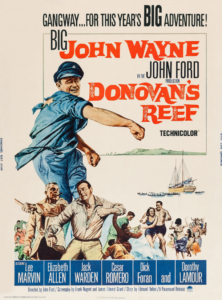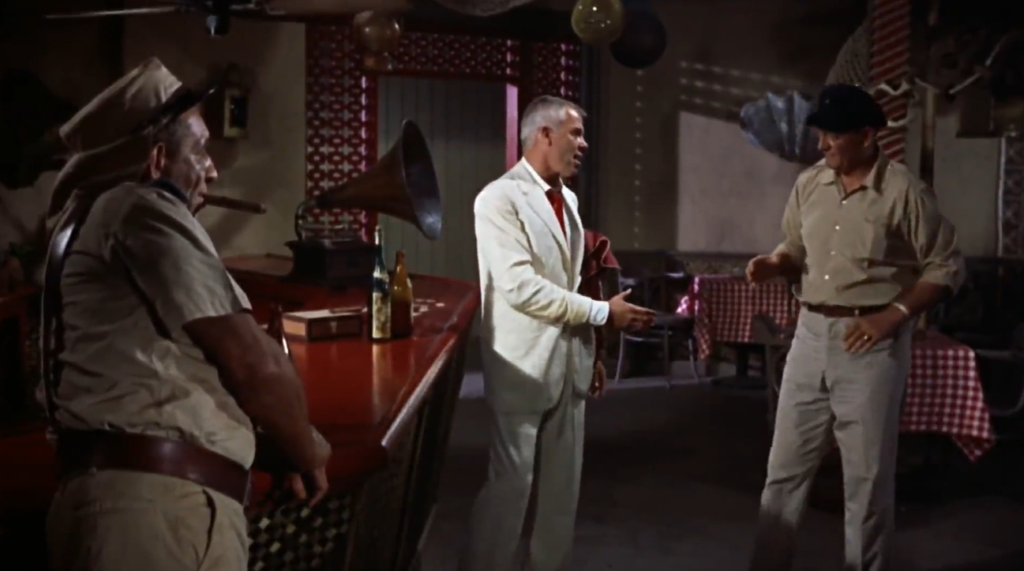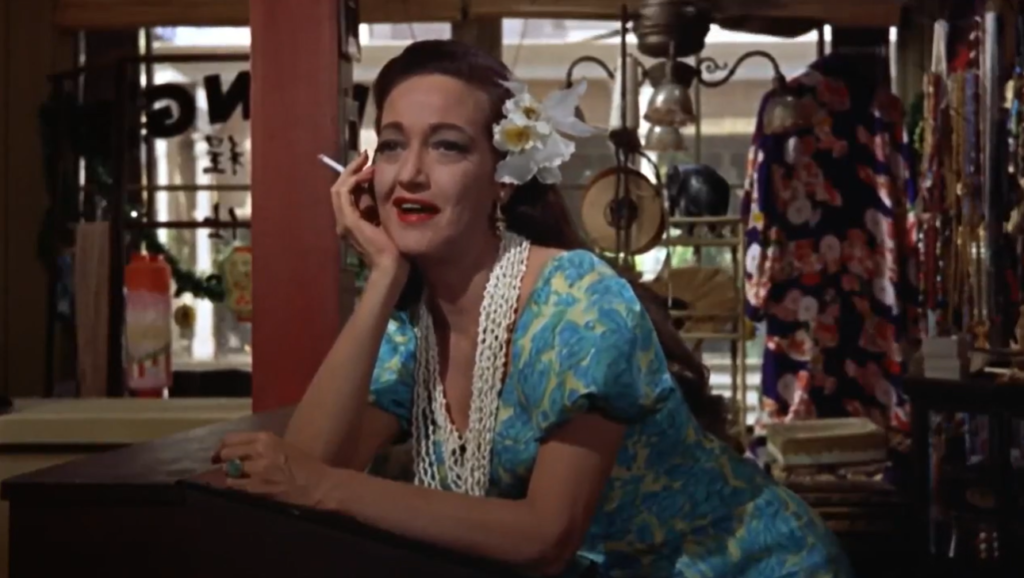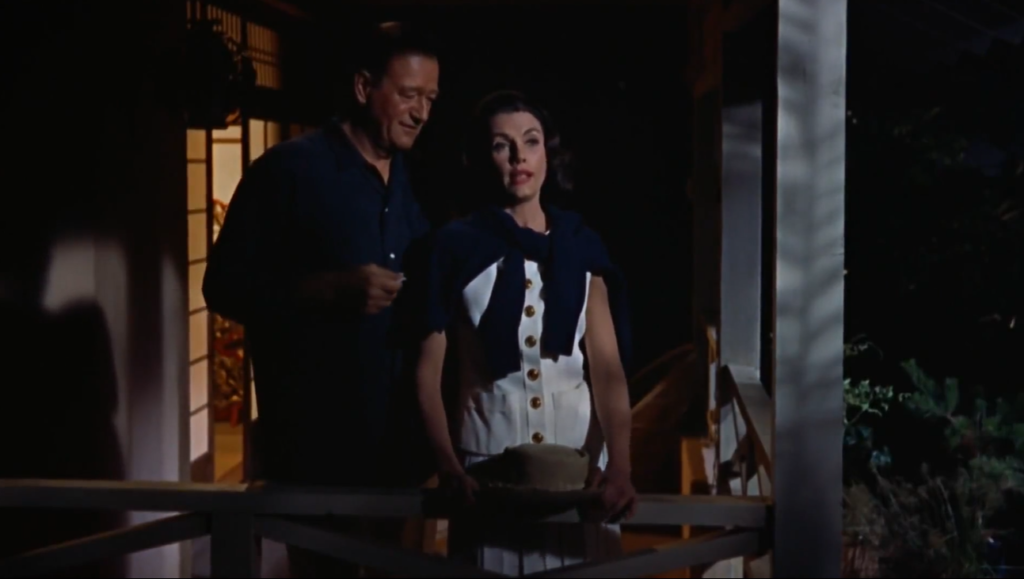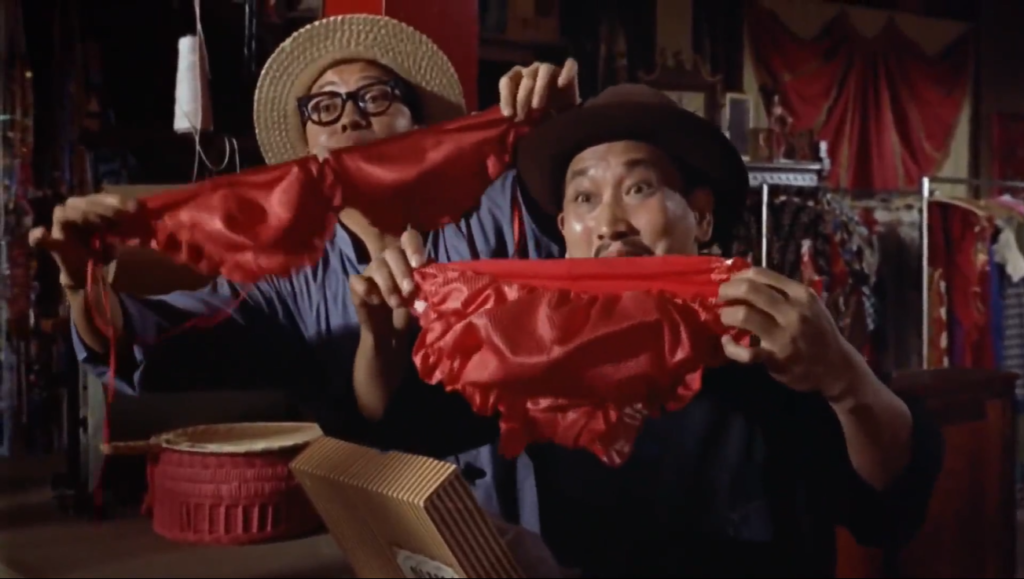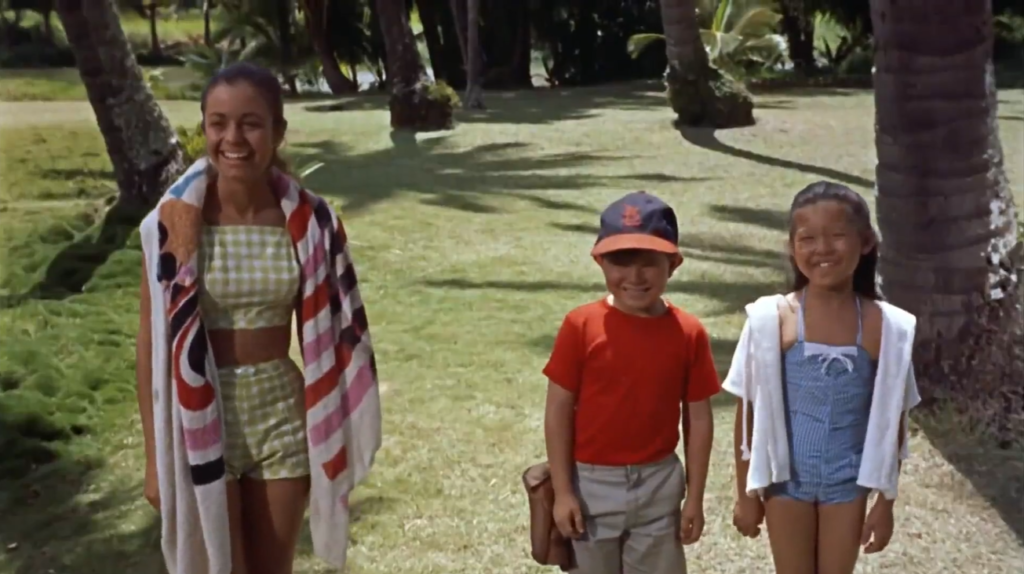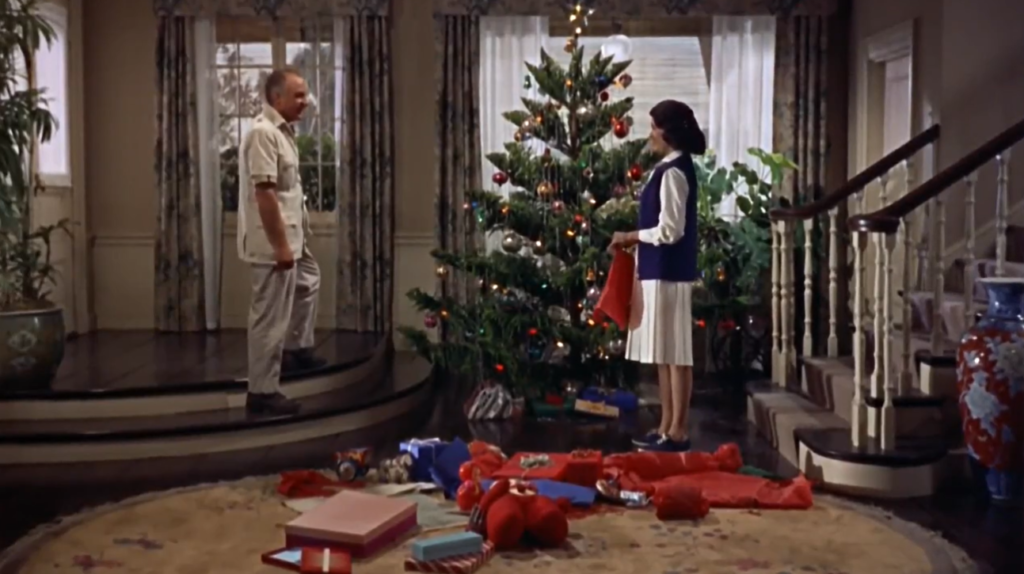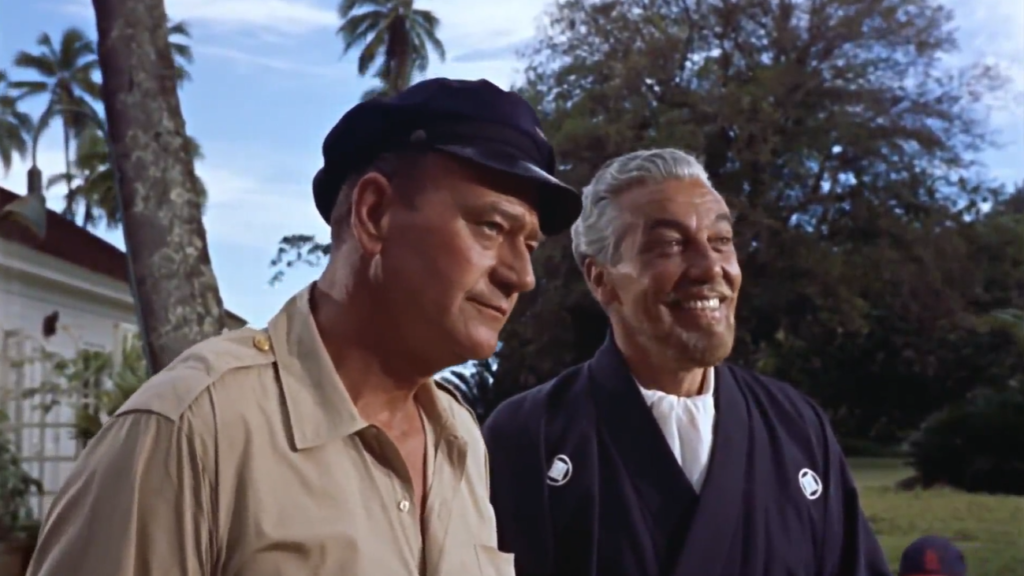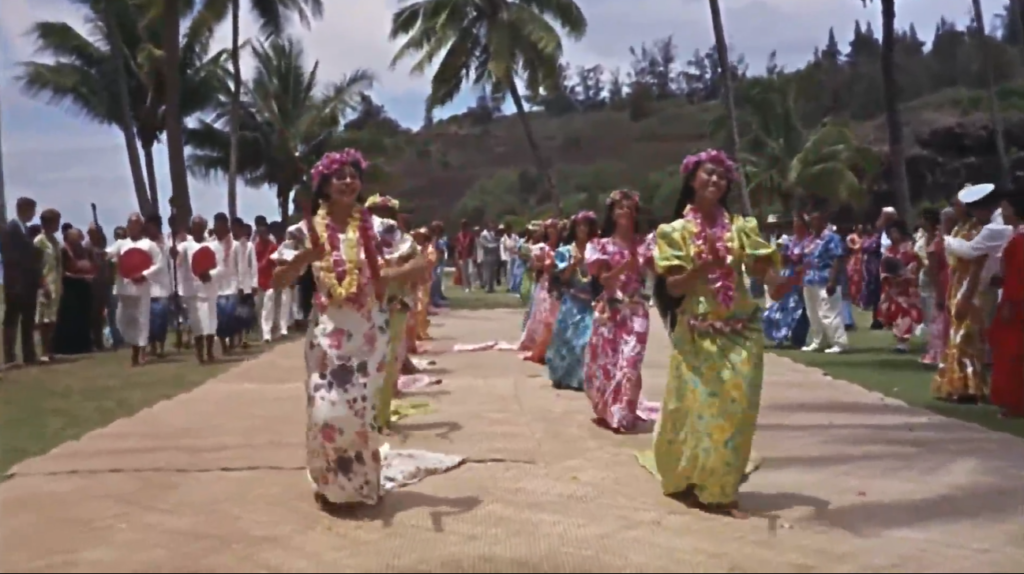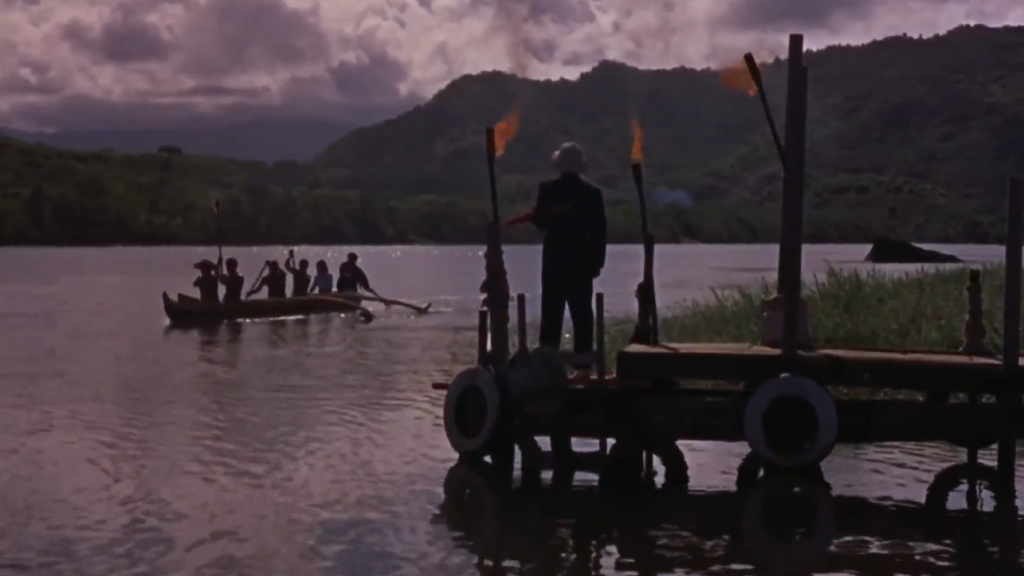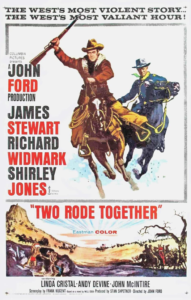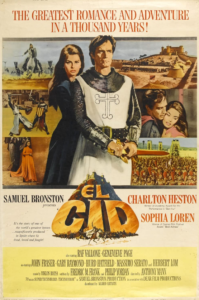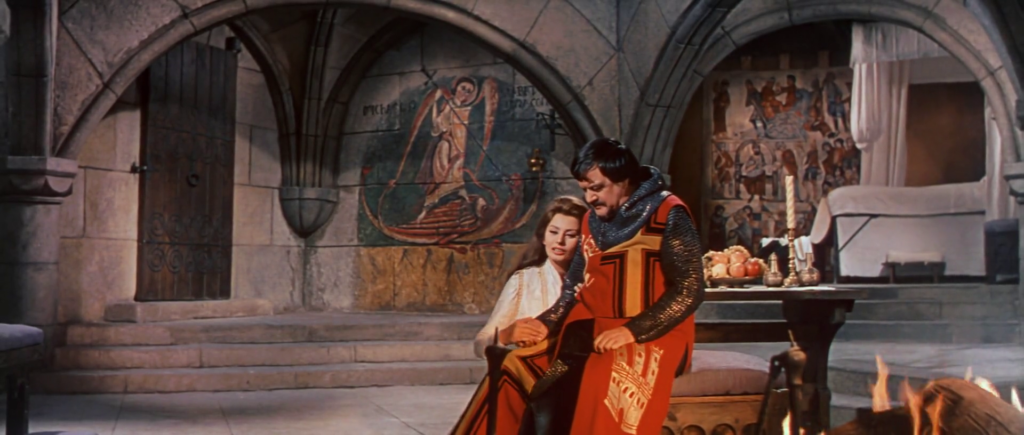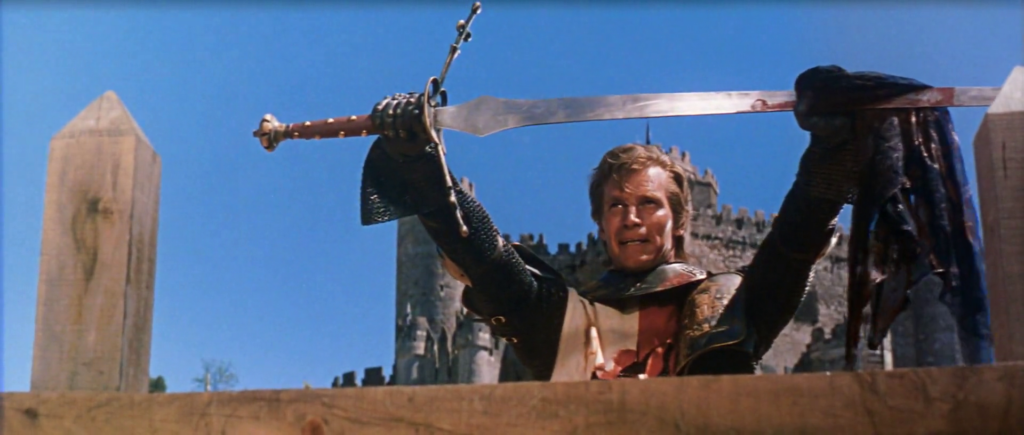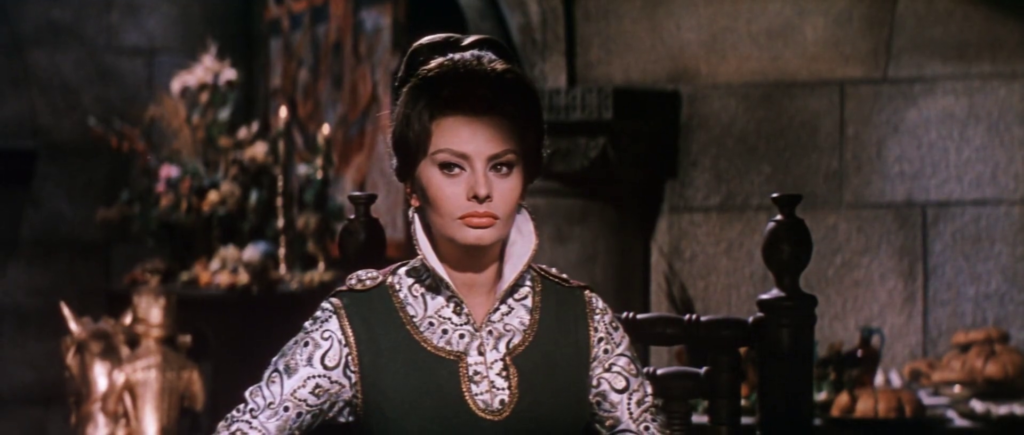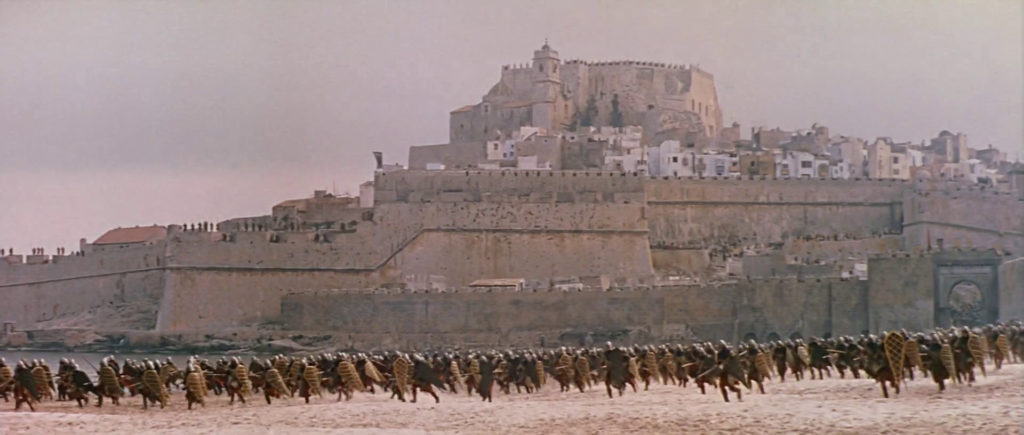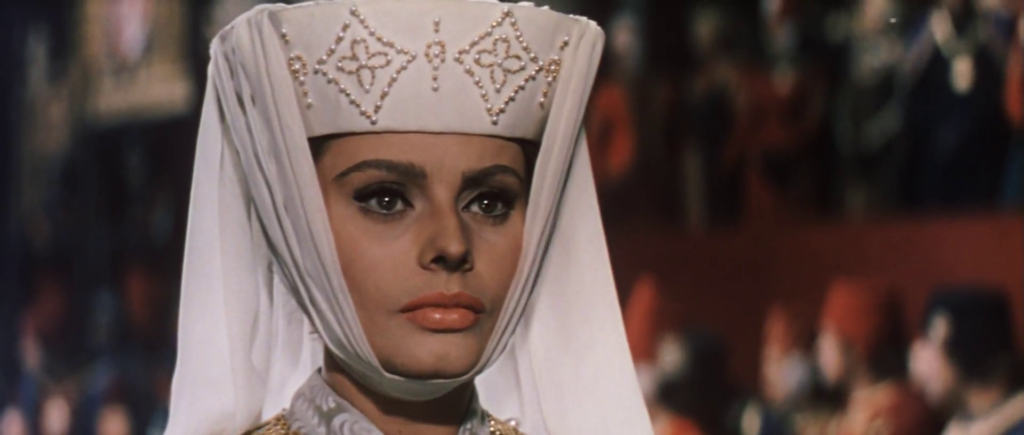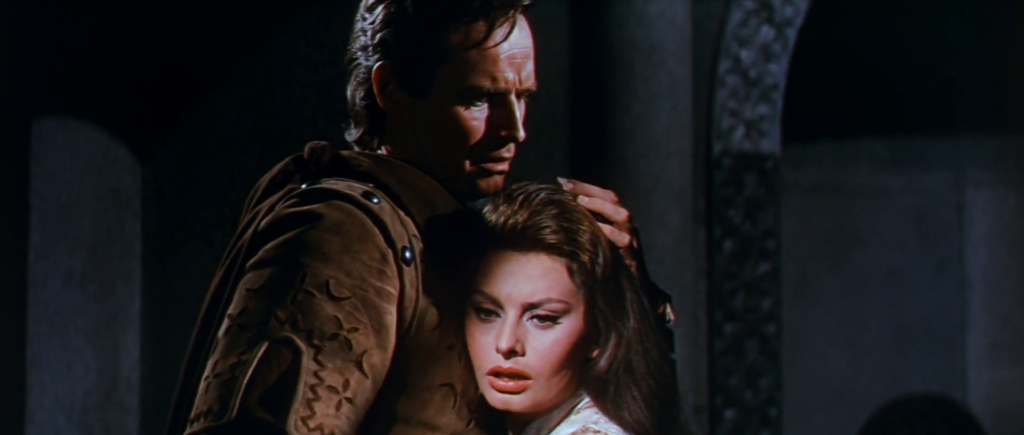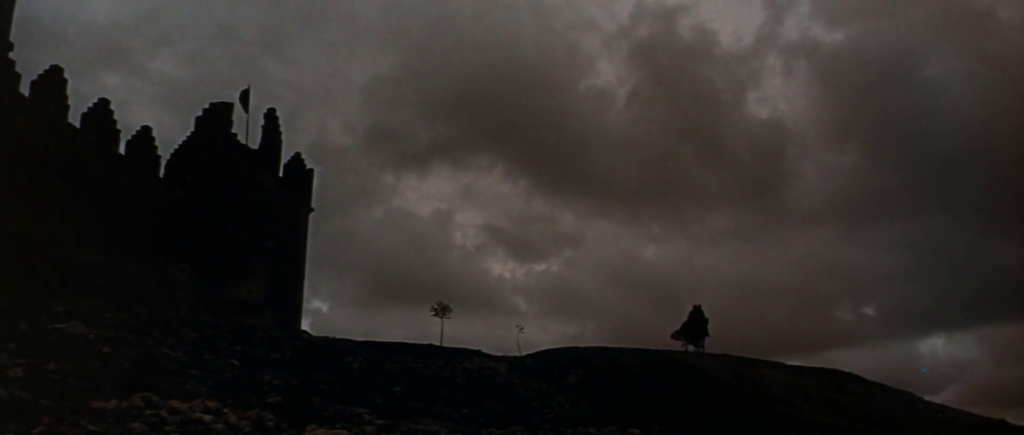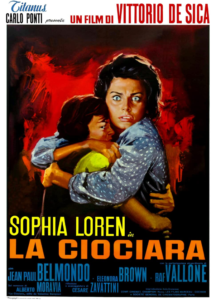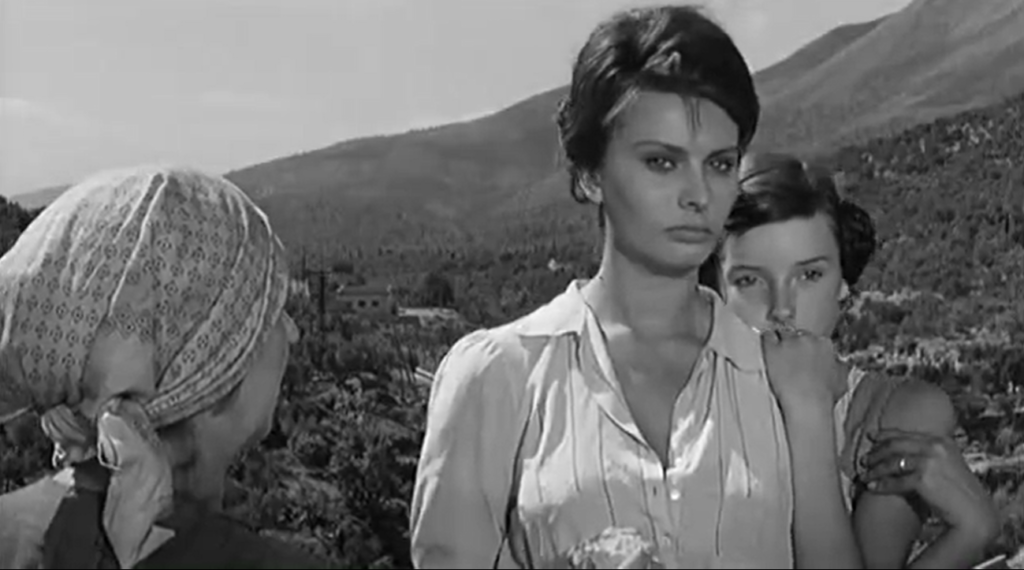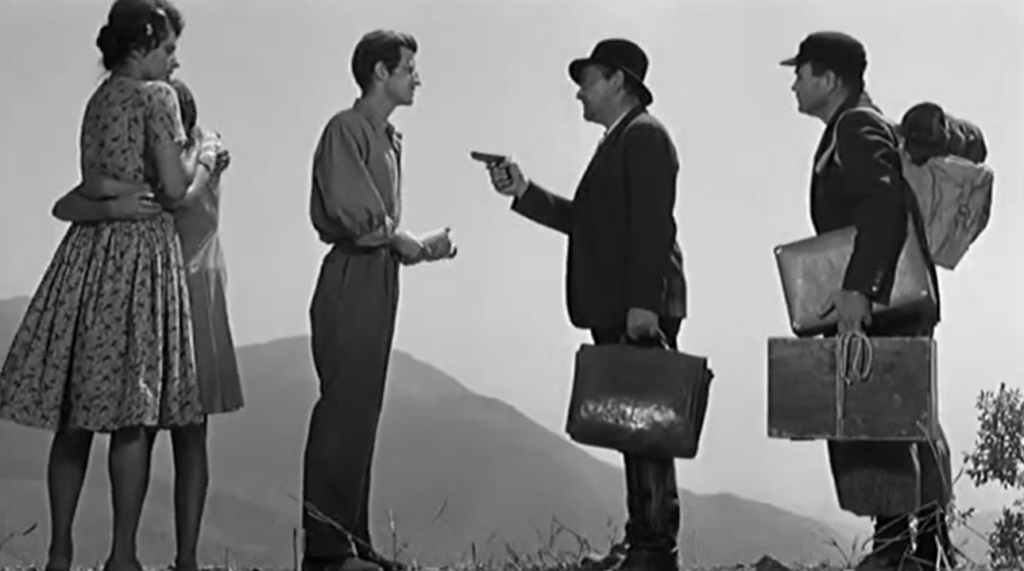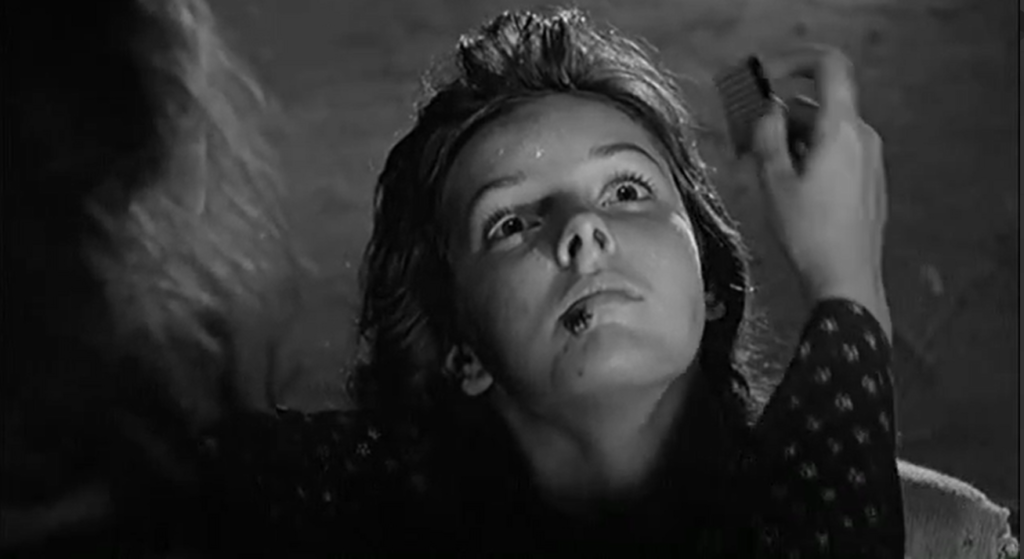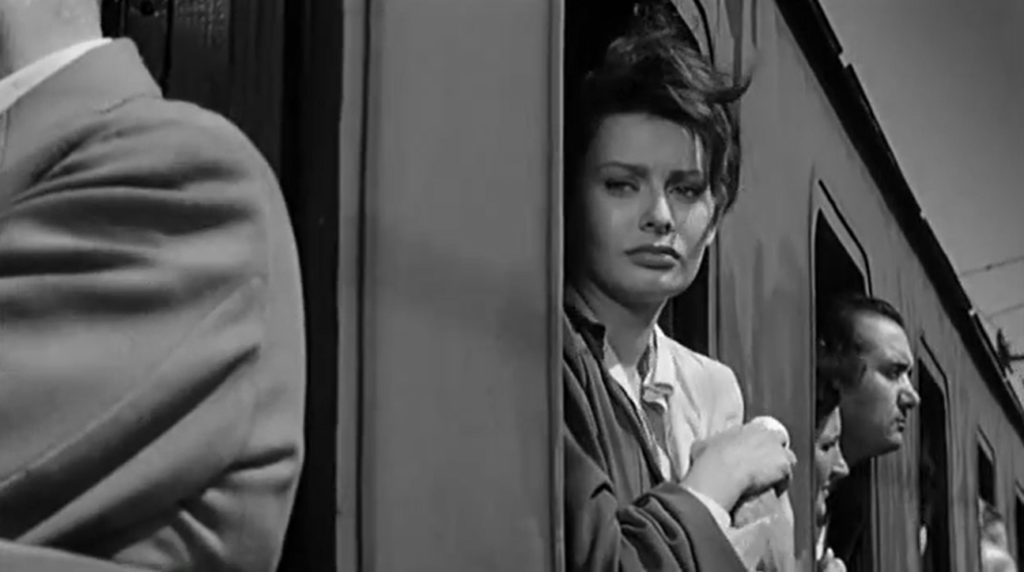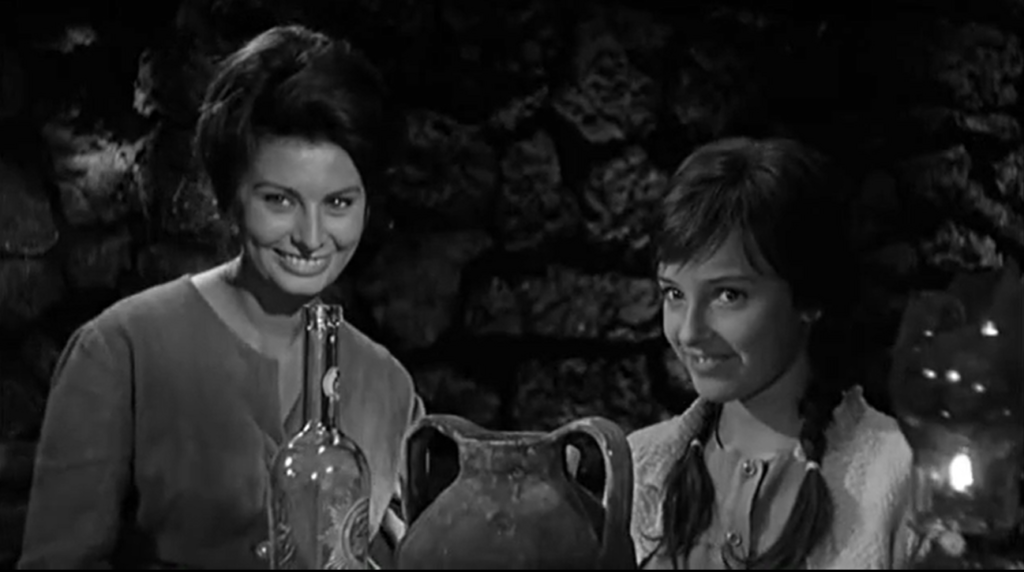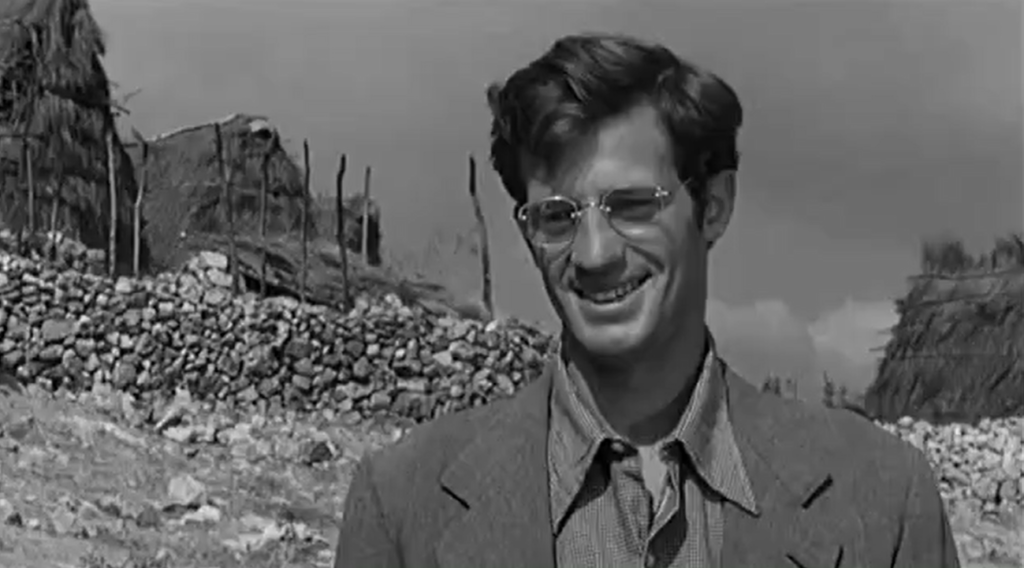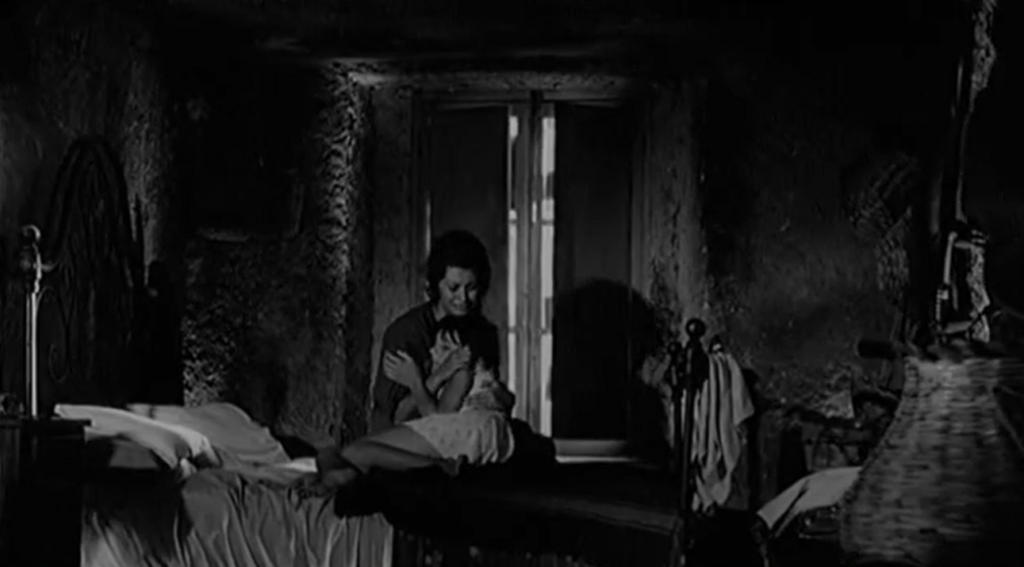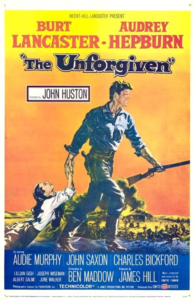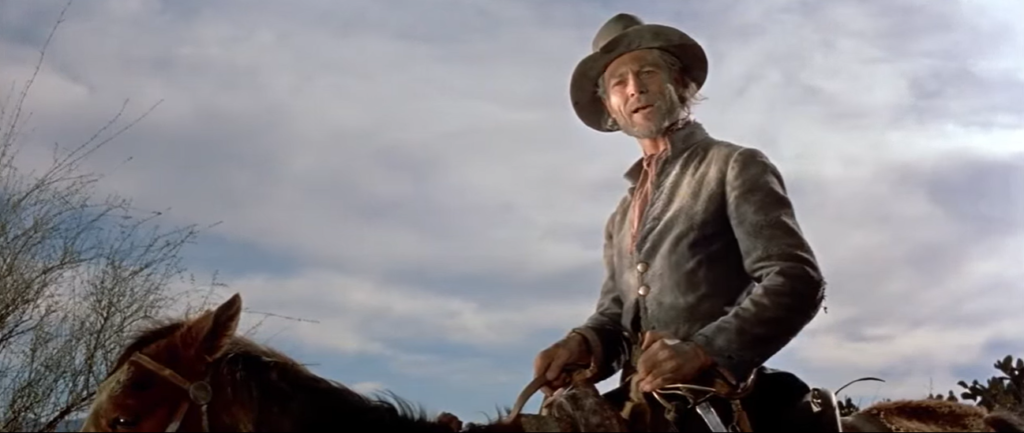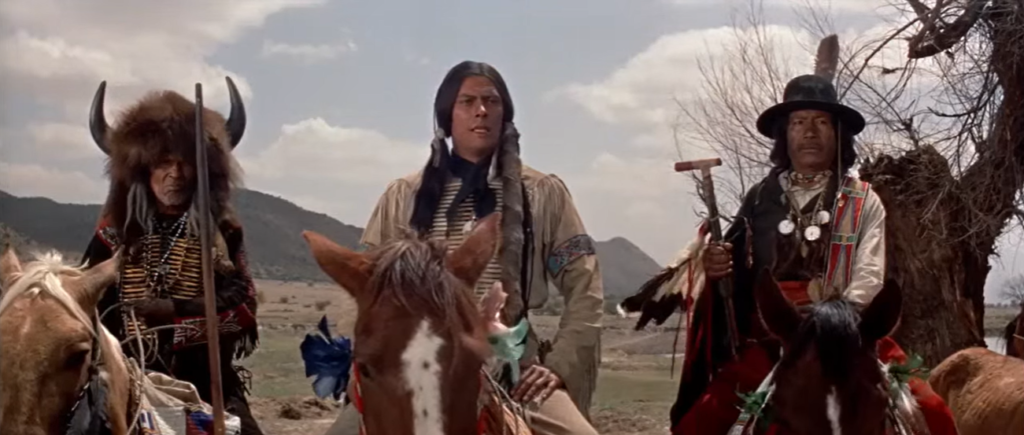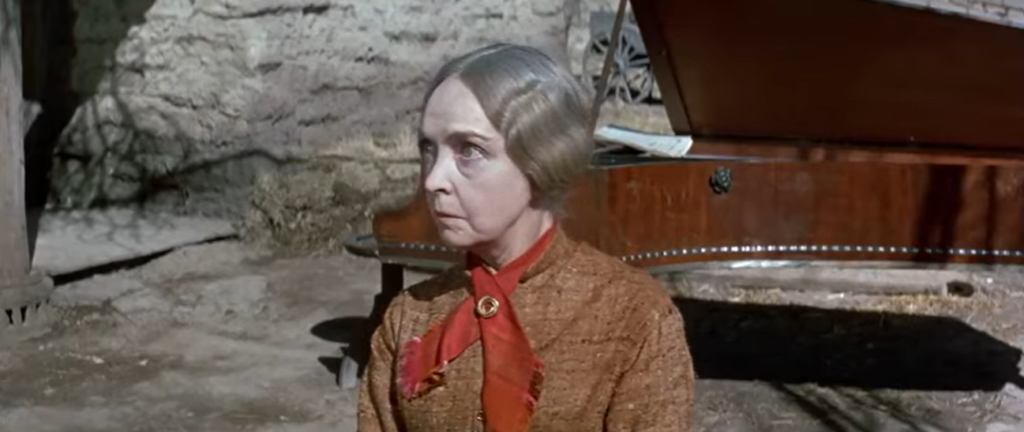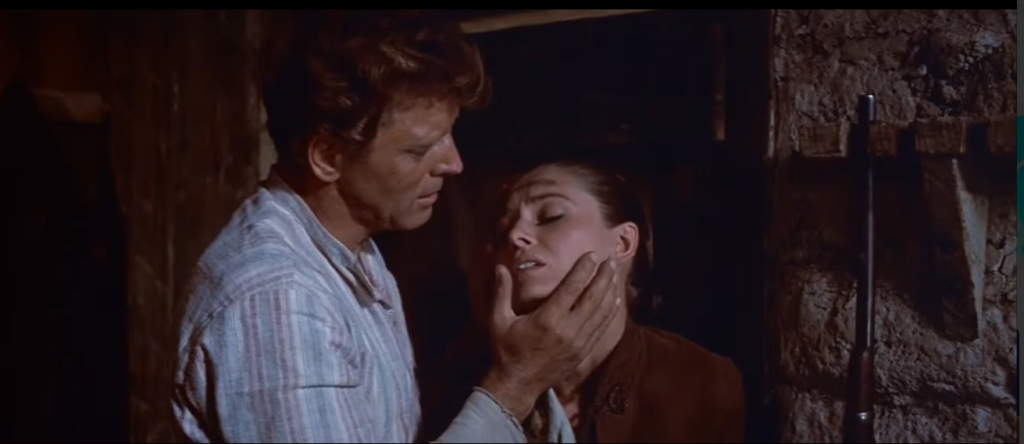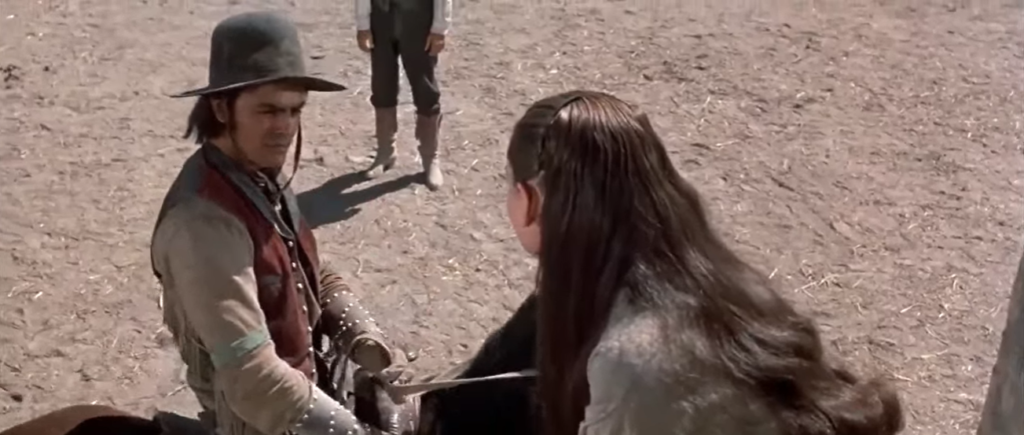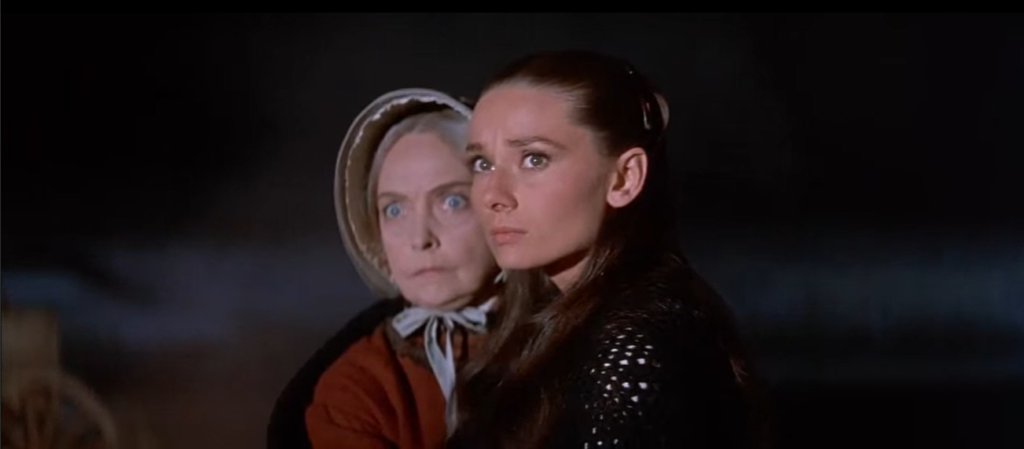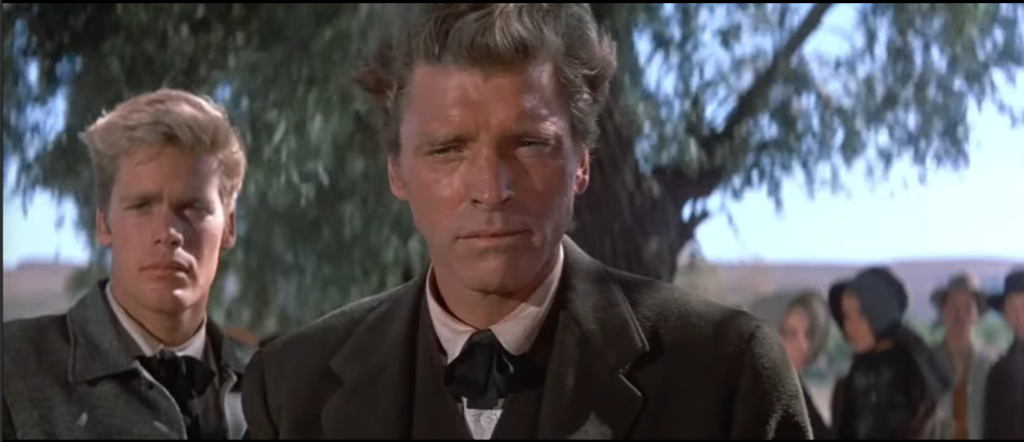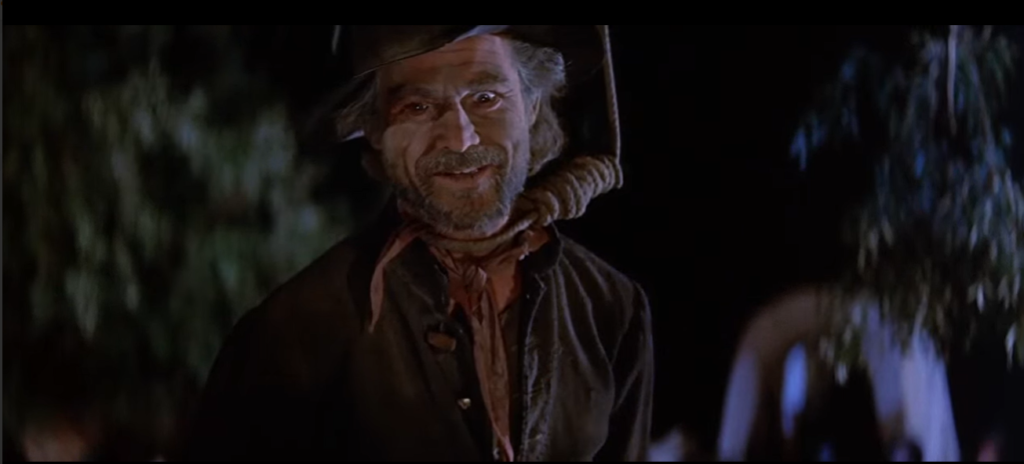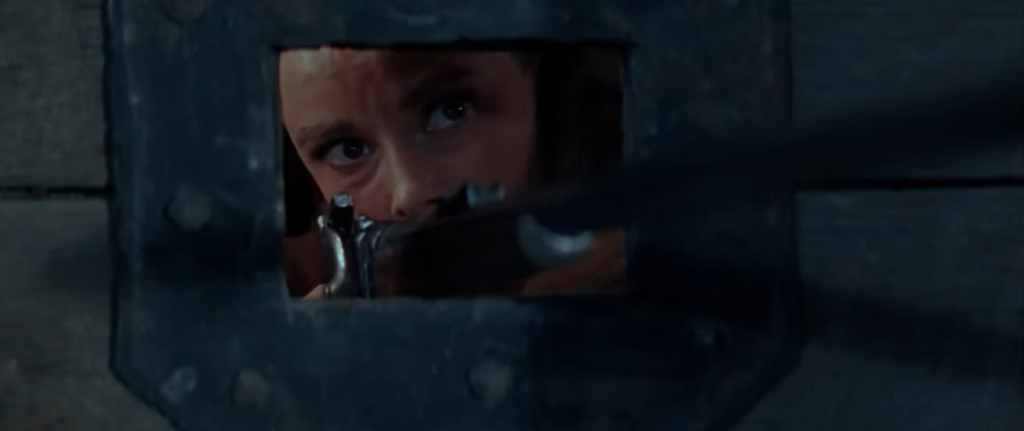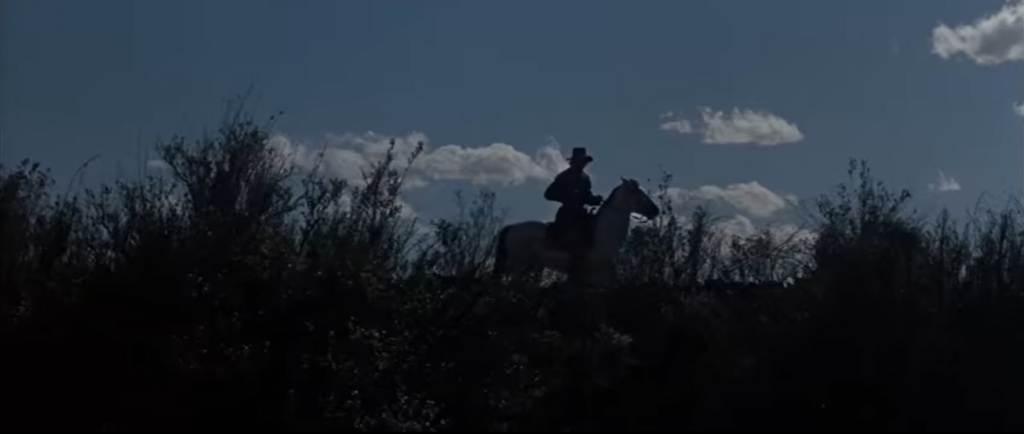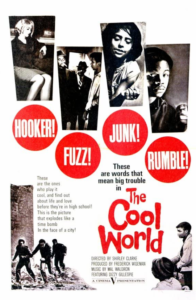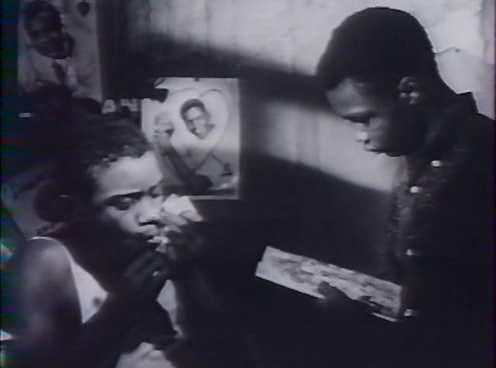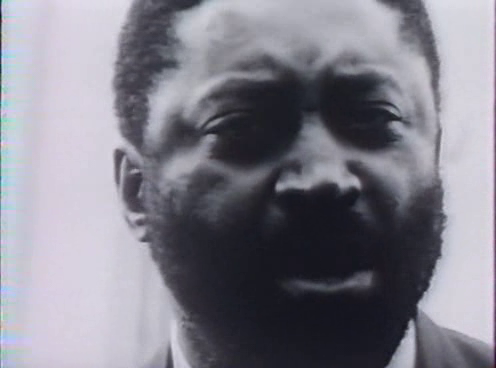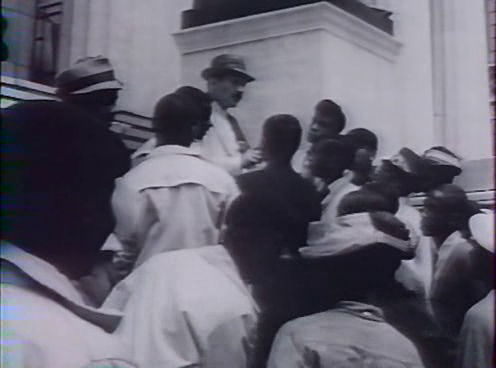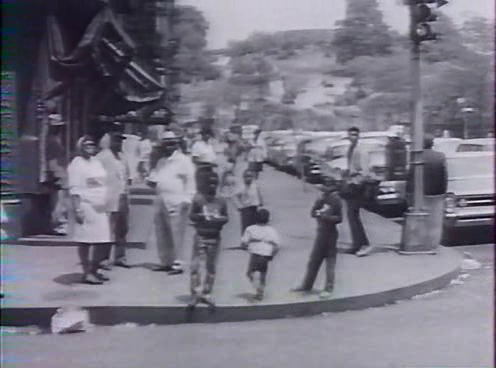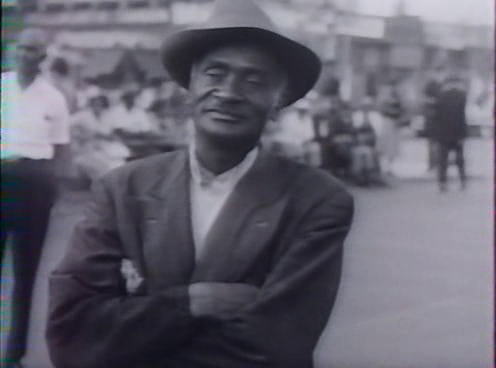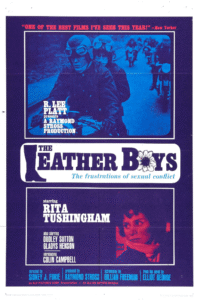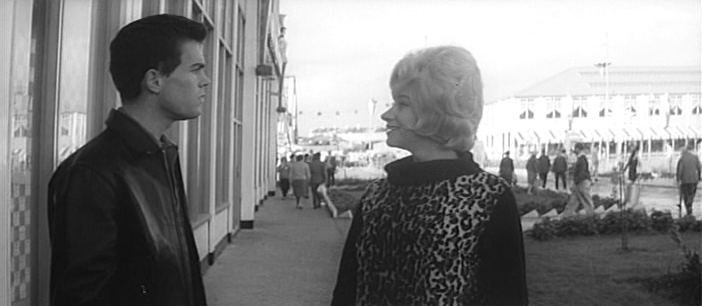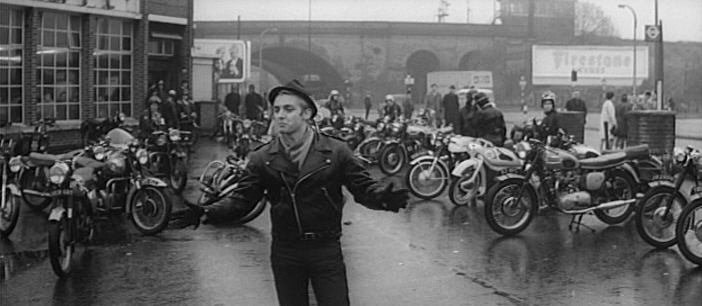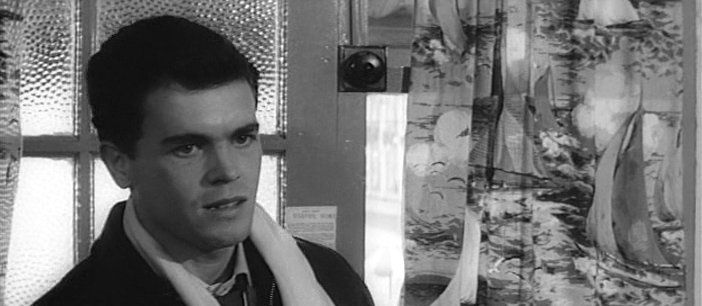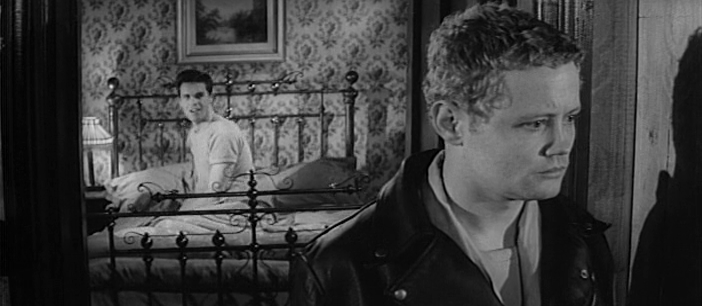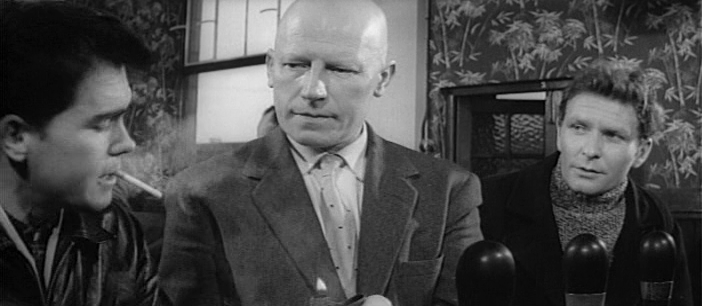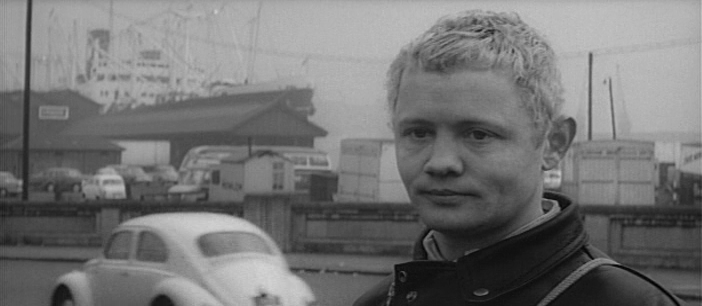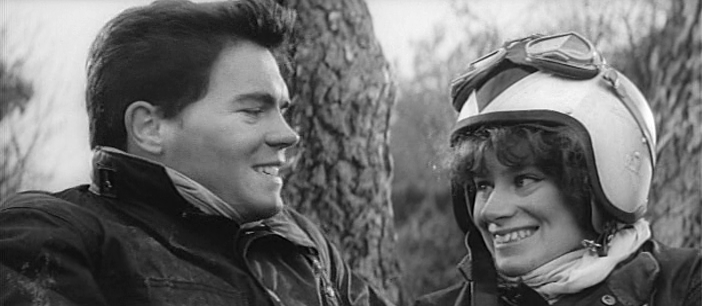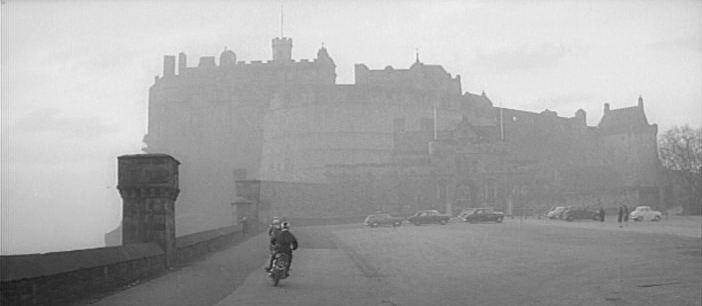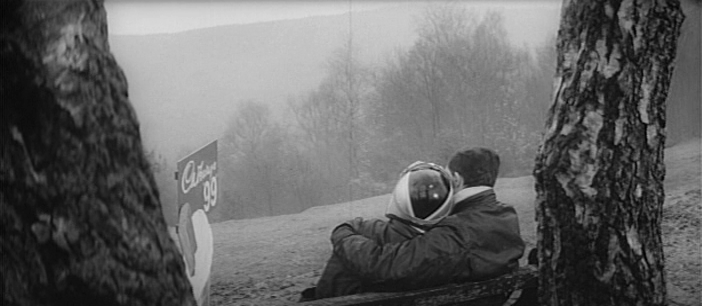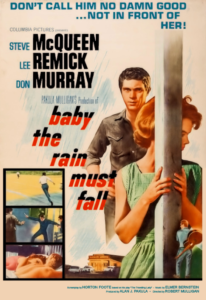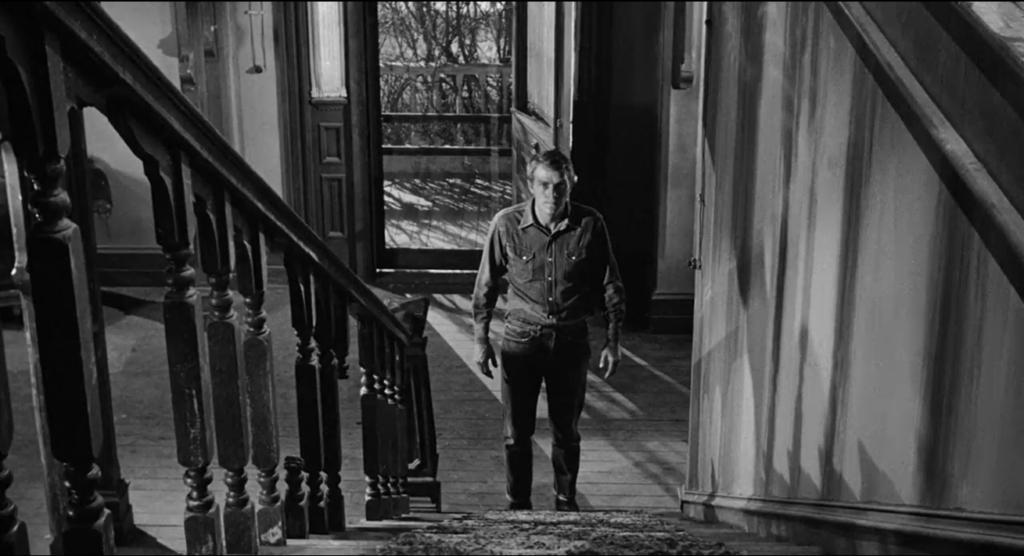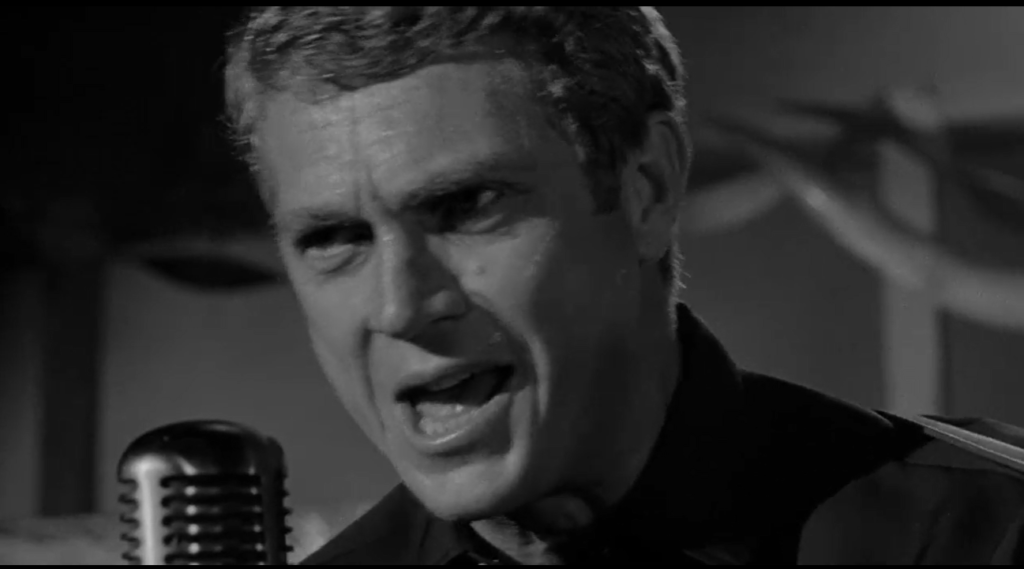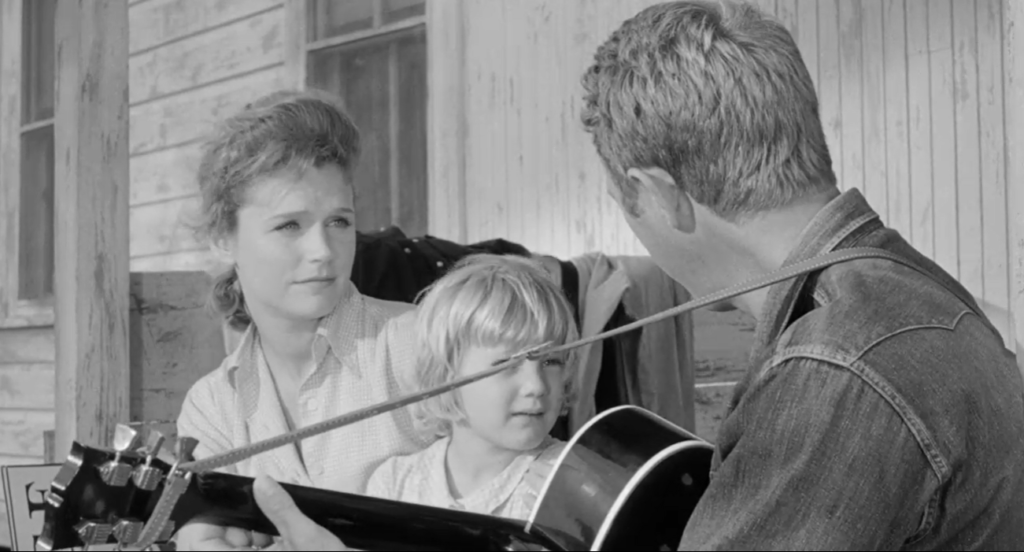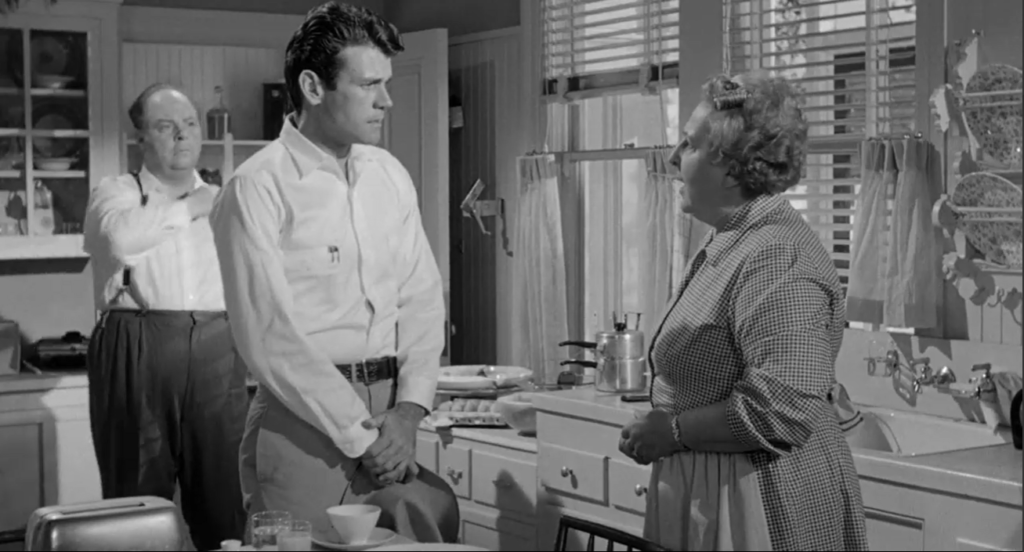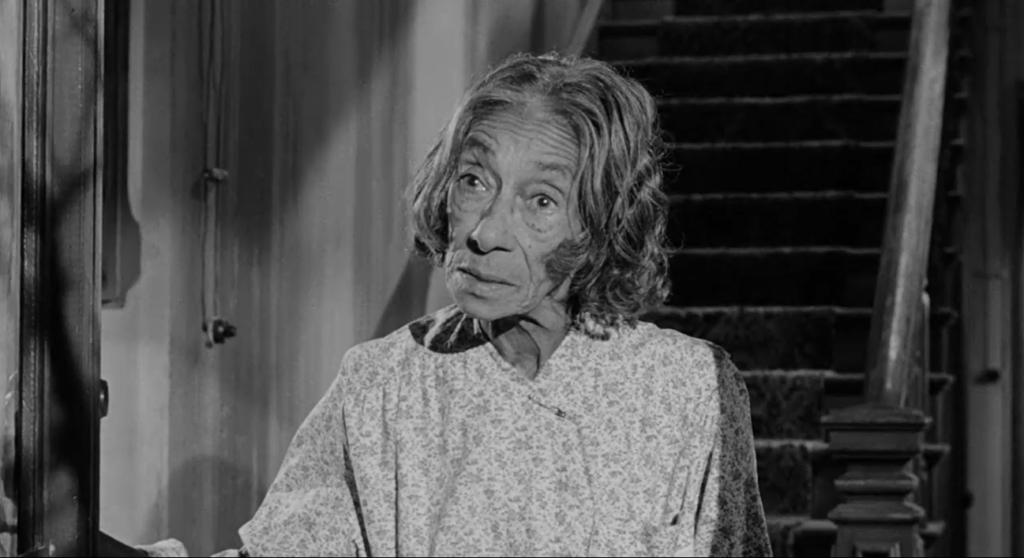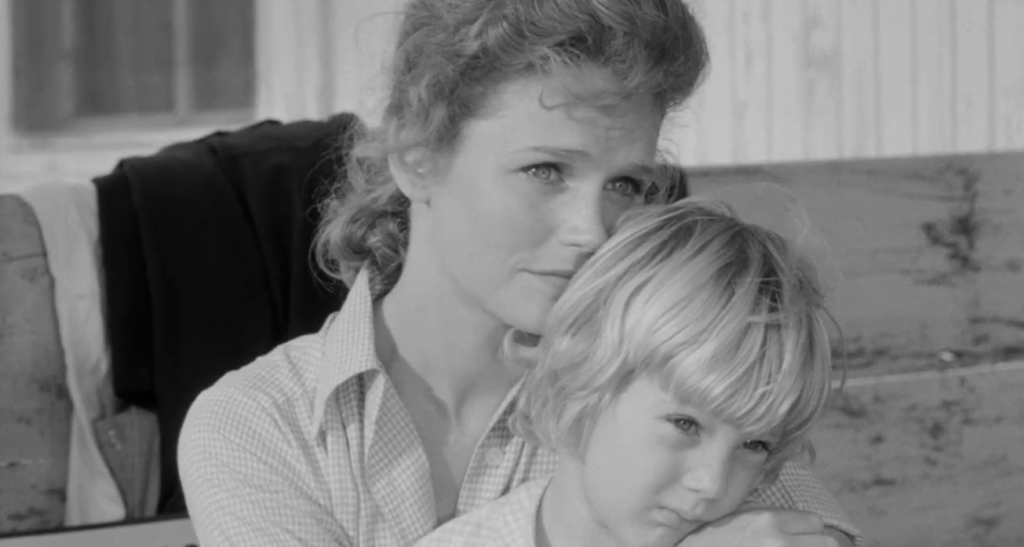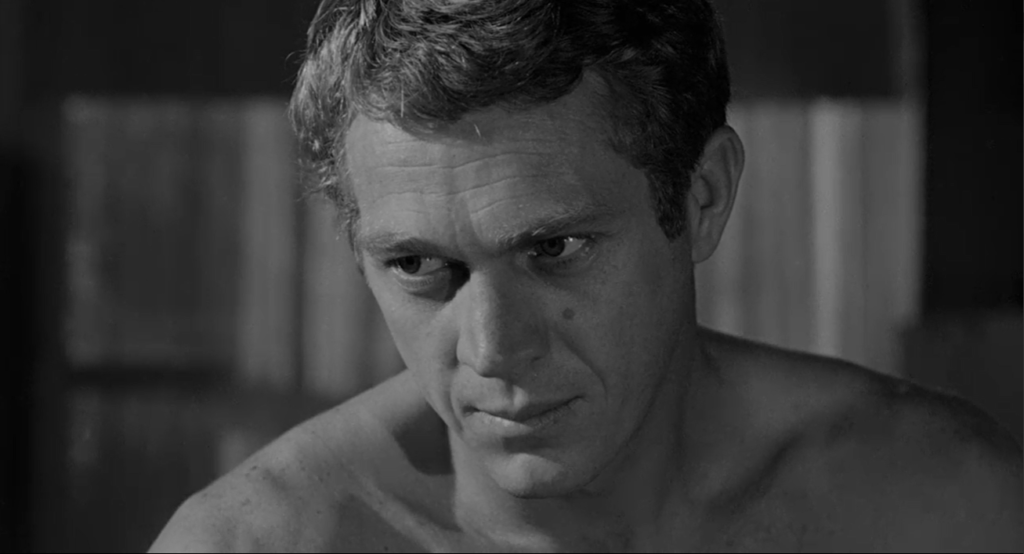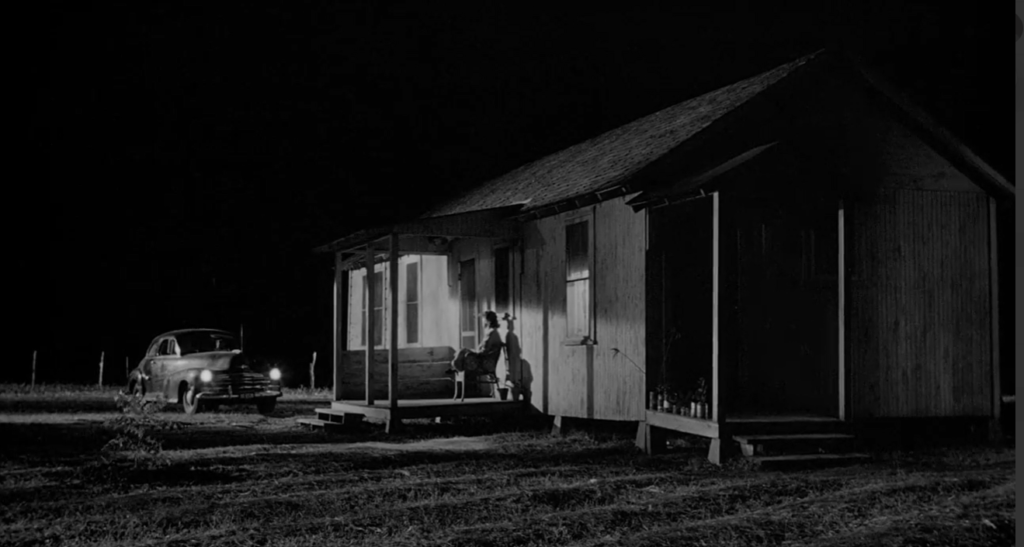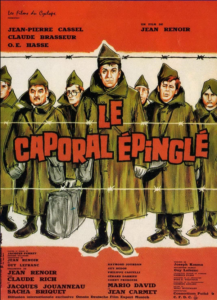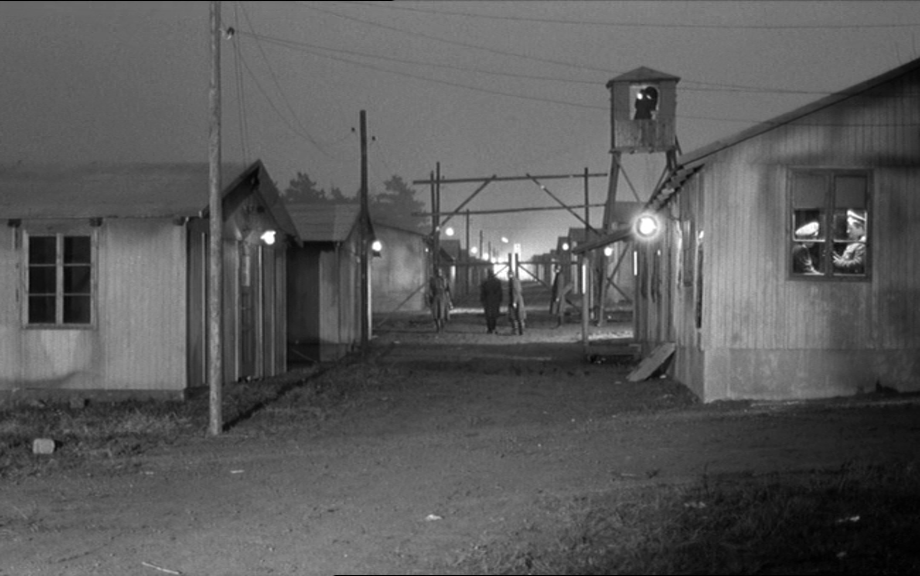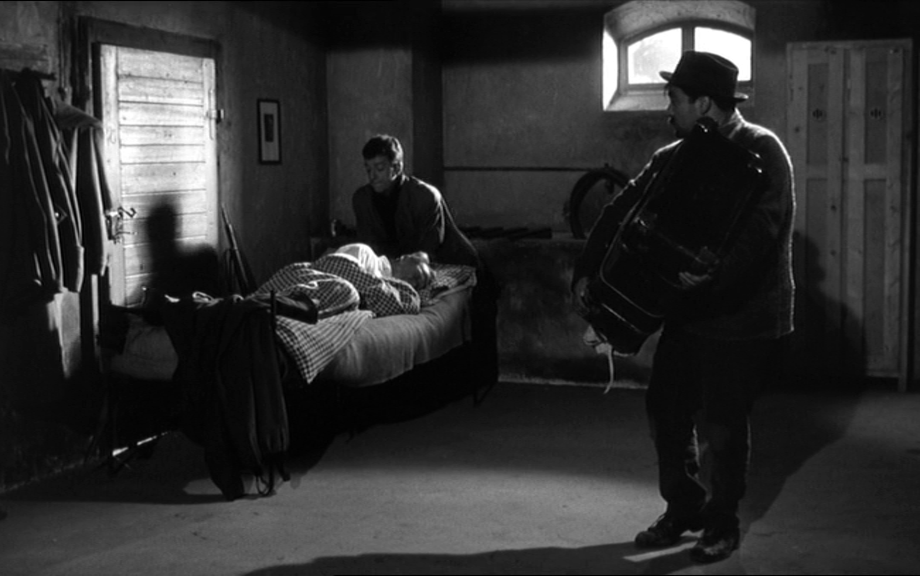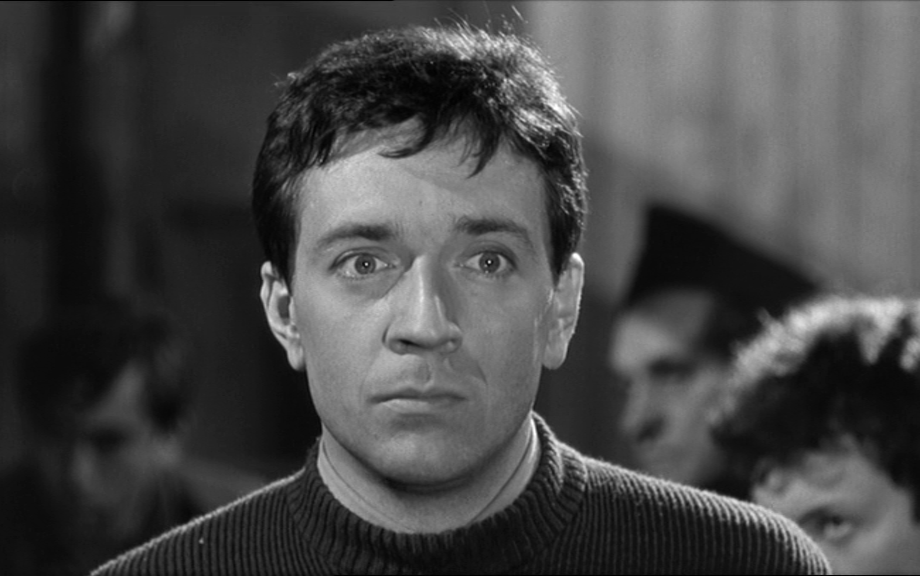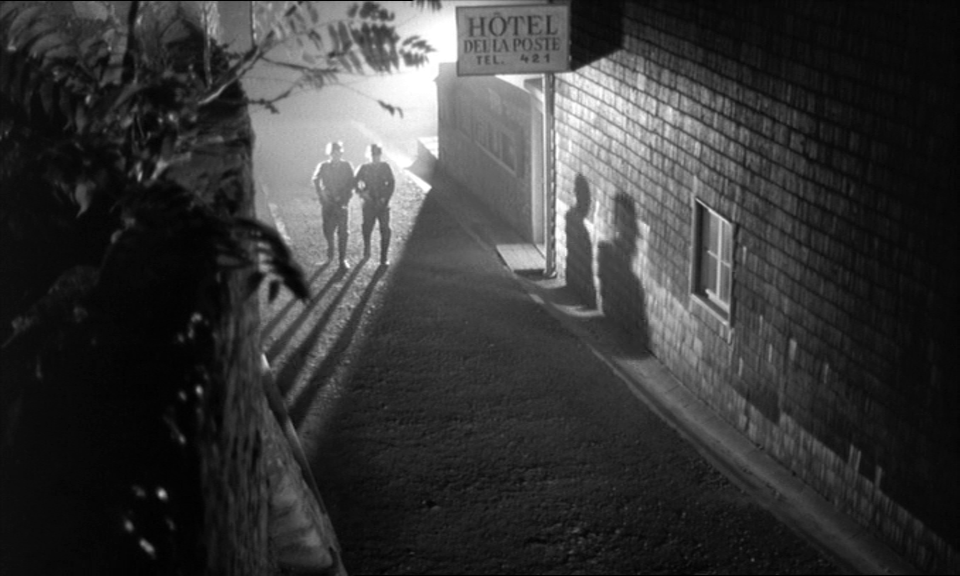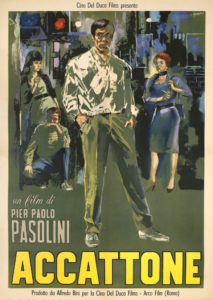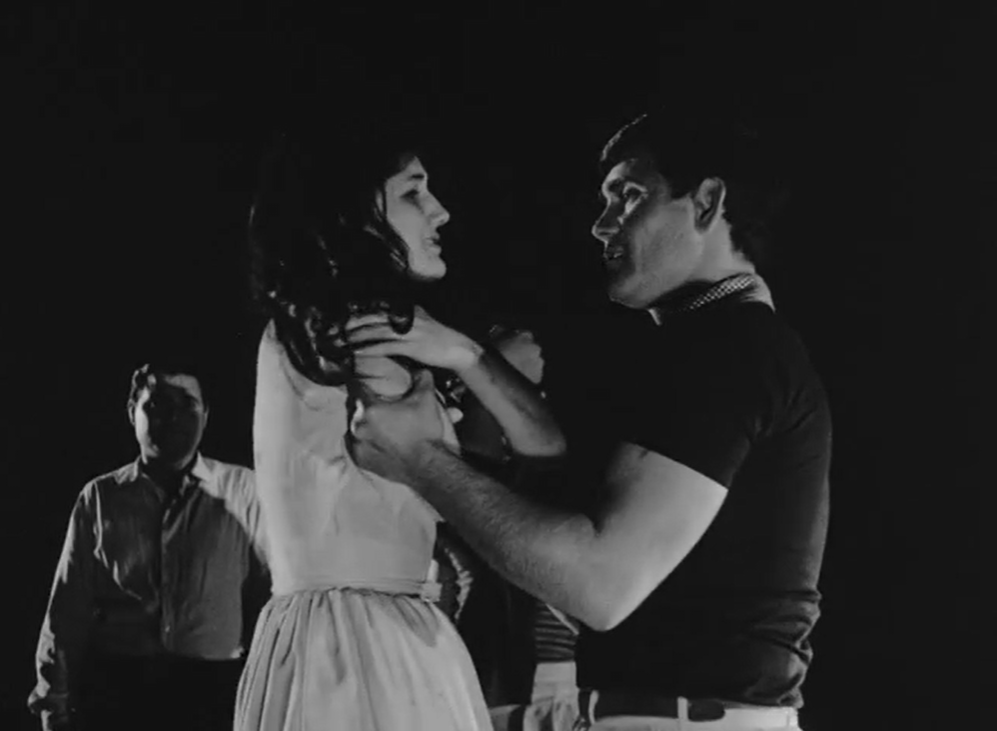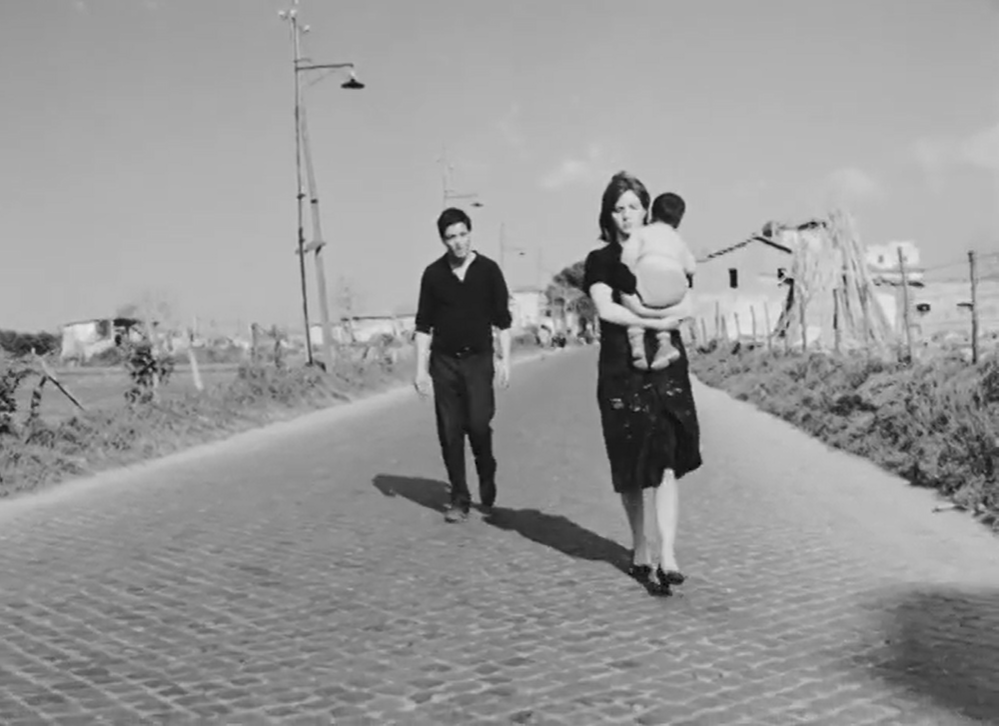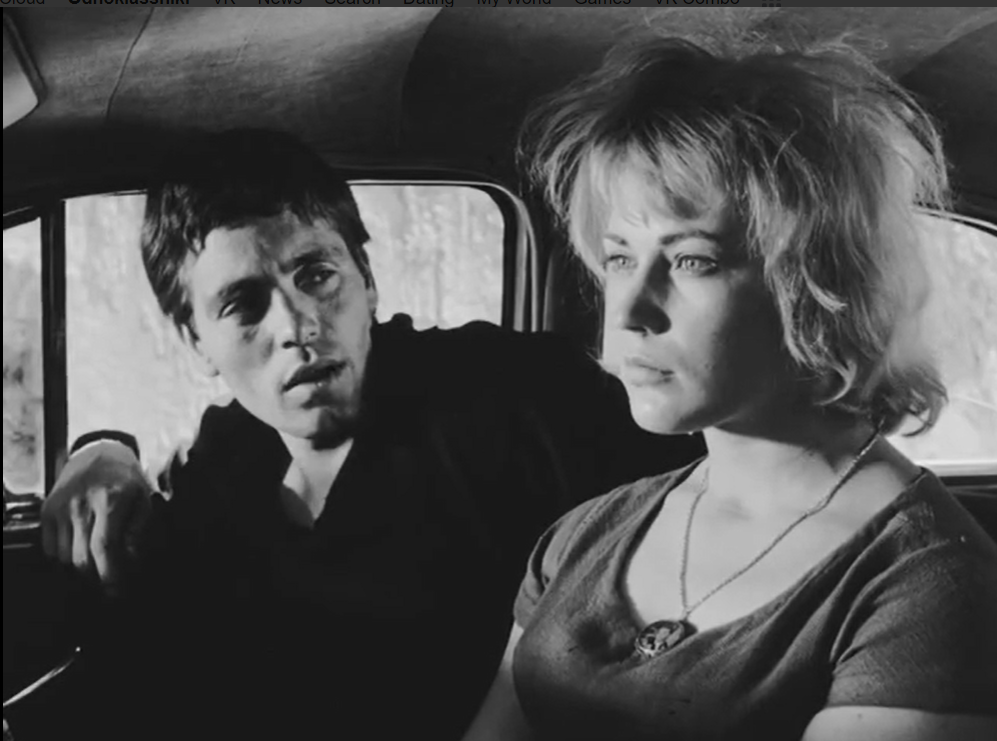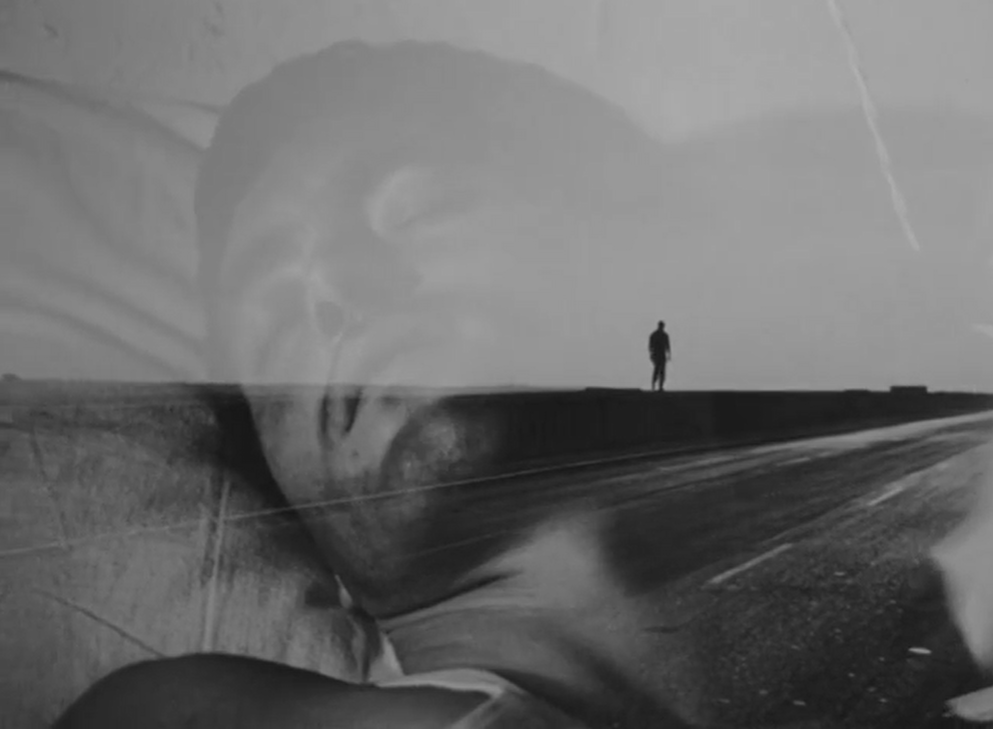|
Genres, Themes, Actors, and Directors:
- Anna Lee Films
- Jimmy Stewart Films
- John Ford Films
- John McIntire Films
- John Qualen Films
- Native Americans
- Race Relations and Racism
- Richard Widmark Films
- Sheriffs and Marshals
- Shirley Jones Films
- Westerns
- Woody Strode Films
Review:
John Ford was apparently not happy about making this adaptation of a novel by western writer Will Cook, which covers several similar themes from his earlier film The Searchers (1956). Much like John Wayne’s embittered Ethan Edwards in The Searchers, Jimmy Stewart’s Guthrie McCabe is a self-centered piece of work — someone it’s hard to relate to as a protagonist.
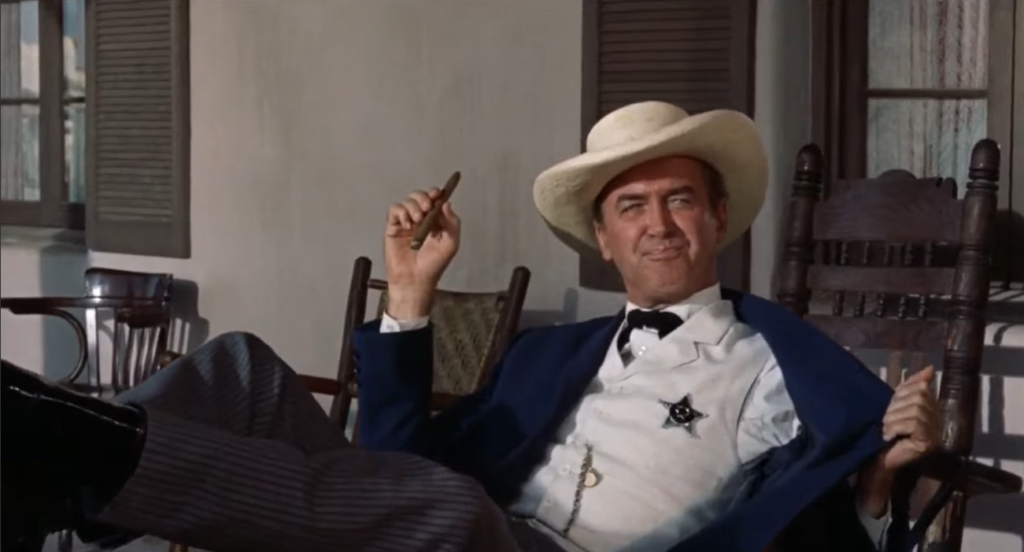
You could argue that McCabe simply shares and airs the widely held racist ideology of the time, which would be true; but it’s still challenging to listen to him tell a heartbroken father (John Qualen) what has likely happened to his missing daughter Freda:
“Go on back to Minnesota. Forget you ever had a daughter. The Comanches mate their women early. If your daughter’s still alive, she’s probably got a couple half-breed kids by now.”
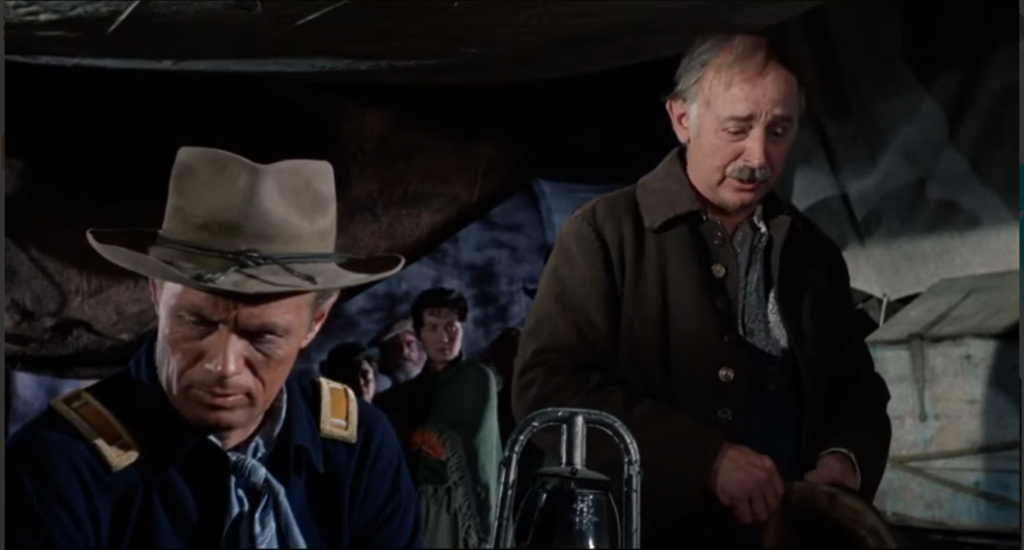
Granted, McCabe is cynical about sentiments like those from a businessman (Willis Bouchey) willing to pay him $1000 to find a young man — any young man will do — to satisfy his mourning wife:
“You know, my wife hasn’t seen that boy of hers since he was 2. Be 17 now. McCabe, I will guarantee that you could bring in any boy that age, tell my wife that it was her son — she’d accept him without question. Then I could get back to my business.”
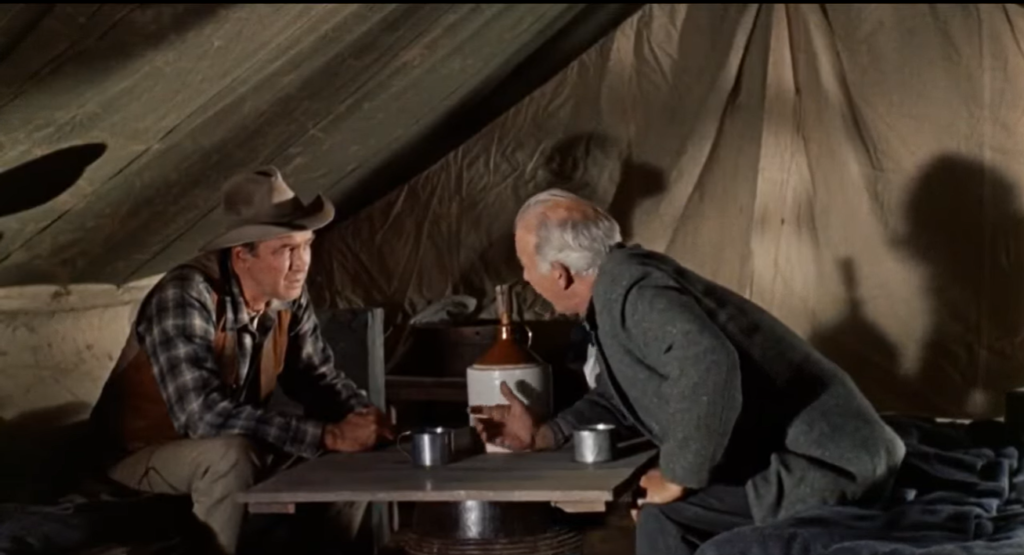
… which doesn’t make any of the proceedings any easier to swallow. Later, when McCabe’s had far too much whiskey (provided by Bouchey), he elaborates to Jones about what her younger brother would look and act like after so many years living with the Comanches:
“That kid has braids down to here now — stiff, stinking braids, filled with buffalo grease. And he’s got a scar there, right in his shoulder, where they stuck the pins right in through his flesh, then took some rawhide ropes and hung him up like that so he’d sort of dangle like that until the kid tore himself off those pins just to prove he’s a man. He forgot his English; he just grunts Comanche now. Just grunts. And he’s killed — and he’s taken scalps, White man’s scalps. And given the chance, sister, he’d rape you… When he’s finished, he’d trade you off to one of the other bucks for a good knife or a bad rifle.”
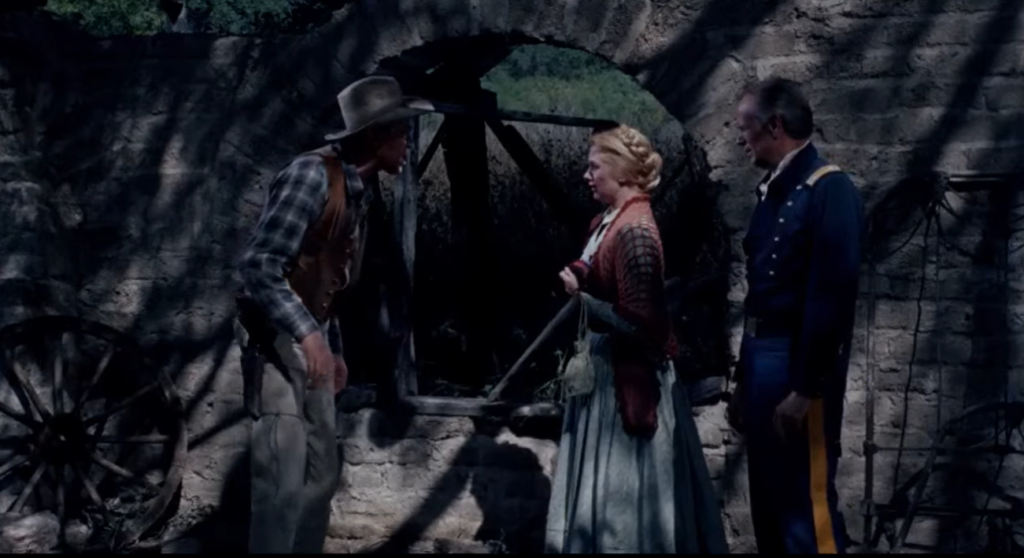
Etc. Once we actually meet the young captives, no opportunity is spared to present them as ghoulish, wracked, deeply disturbed individuals:
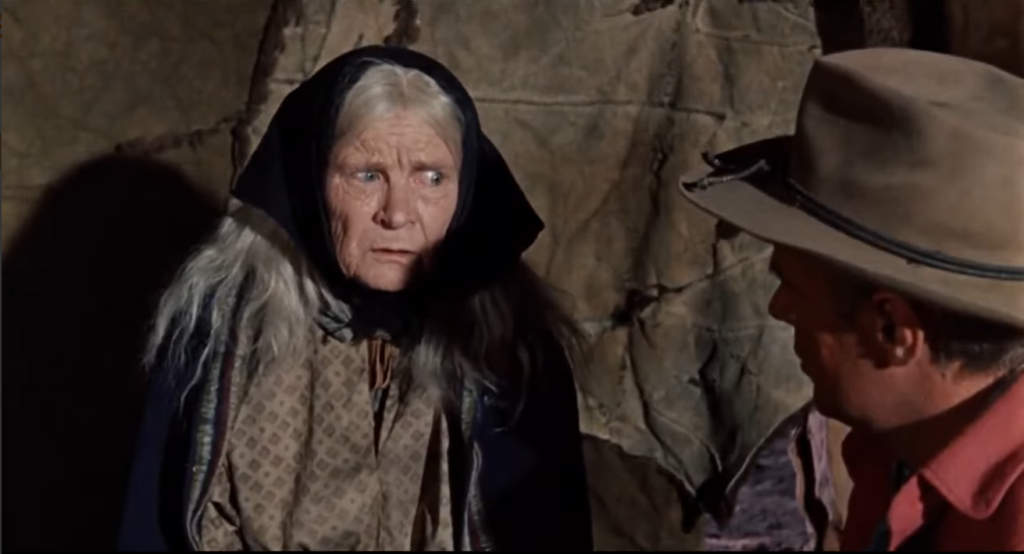
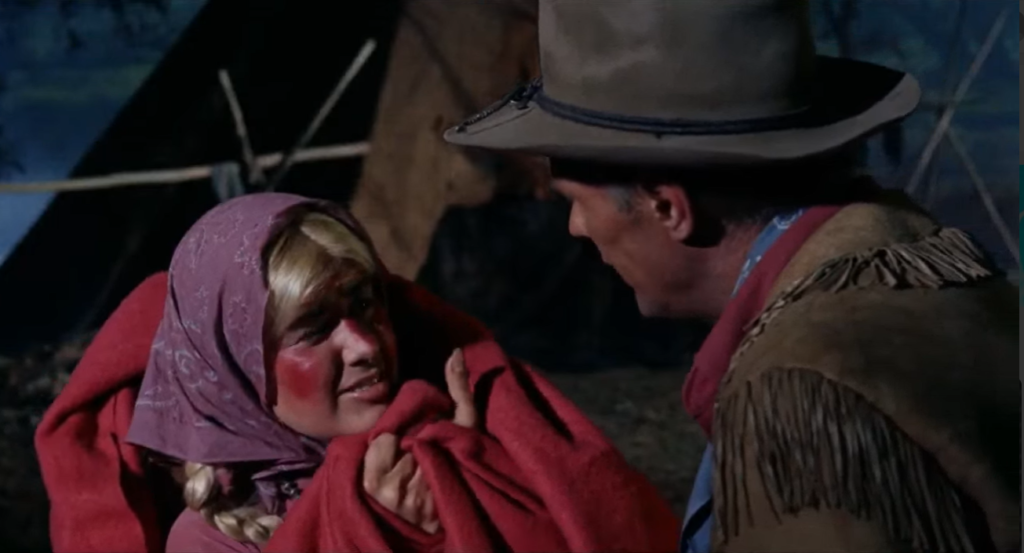
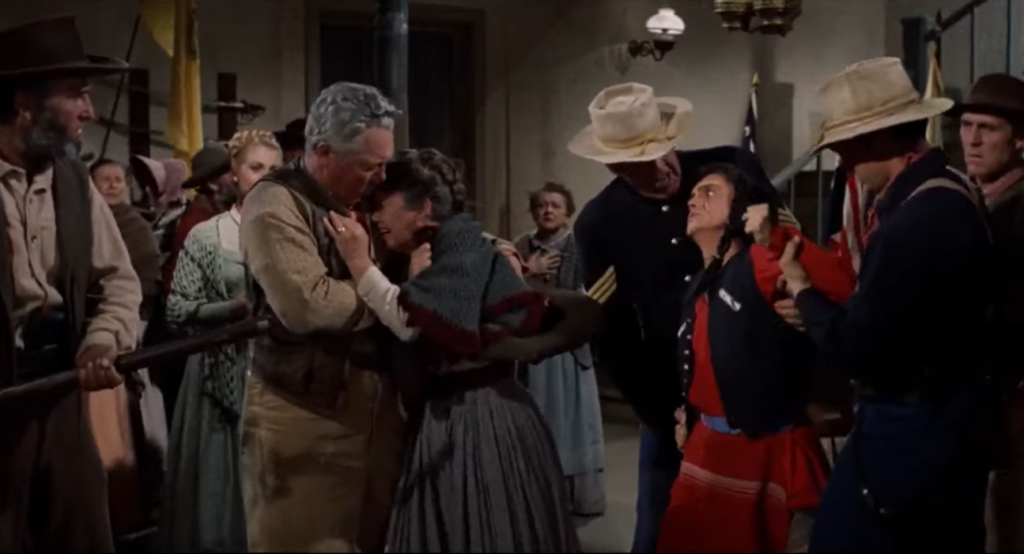
The only hint we get of the possibility for inter-racial harmony involves Stewart’s growing relationship with sympathetic Cristal, who is mercilessly Othered given her relations with a Comanche, but holds on tightly to her values and identity.
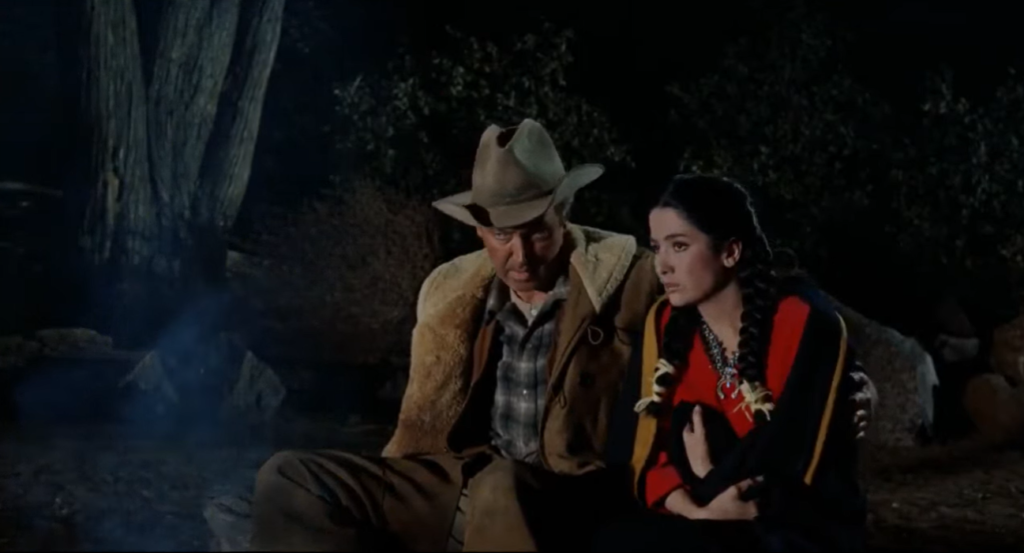
Meanwhile, we’re given a side romance to root for between Widmark and Jones (years apart in age, but so it goes):

… a sassy, strong, middle-aged woman in Hayes’ Belle Aragon:
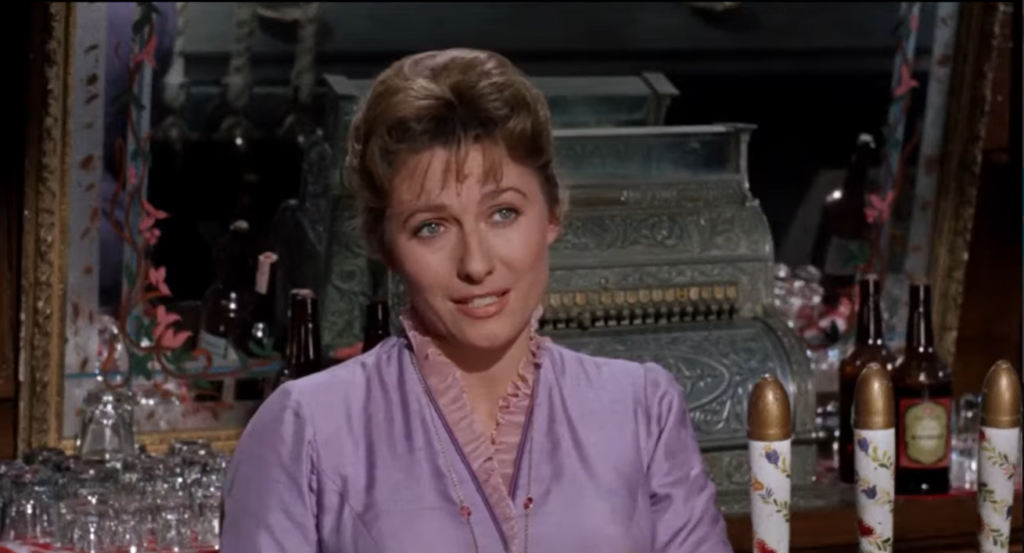
… and, naturally, several comedic sidekicks (including Harry Carey Jr., Ken Curtis, and Andy Devine).
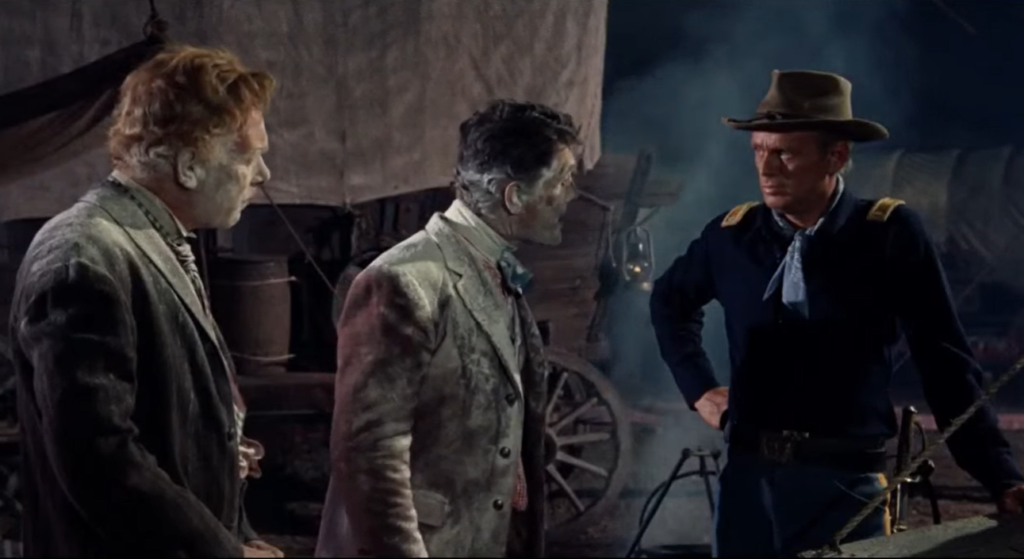
Stewart and Widmark turn in solid performances as the leads, though it’s never entirely clear how or why this pair became friends at one point.
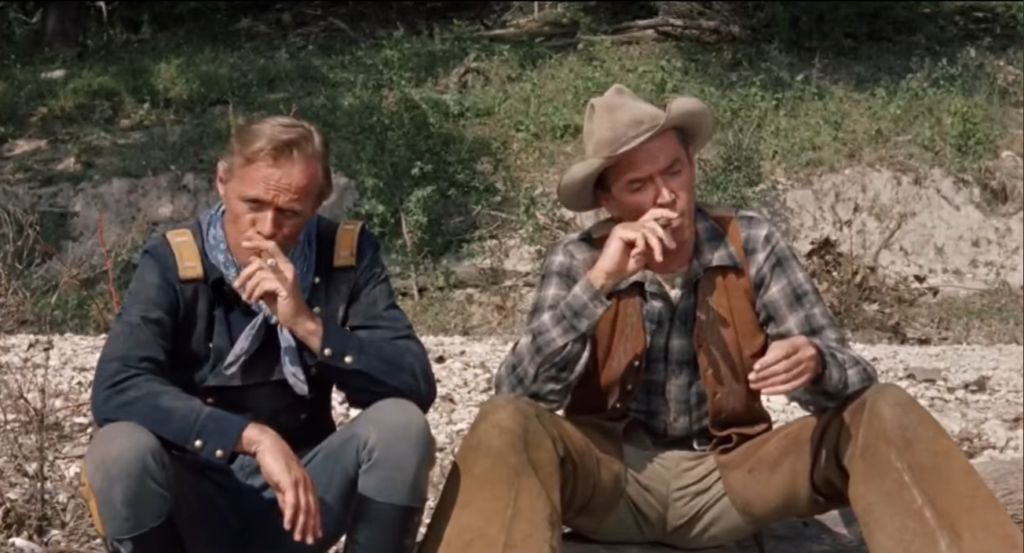
Note: I recommend Chris Smallbone’s essay on the film for NativeAmerican.co.uk to read more insights on the film’s strengths and omissions related to more overtly portraying racial tensions of the time.
Notable Performances, Qualities, and Moments:
- Charles Lawton Jr.’s cinematography
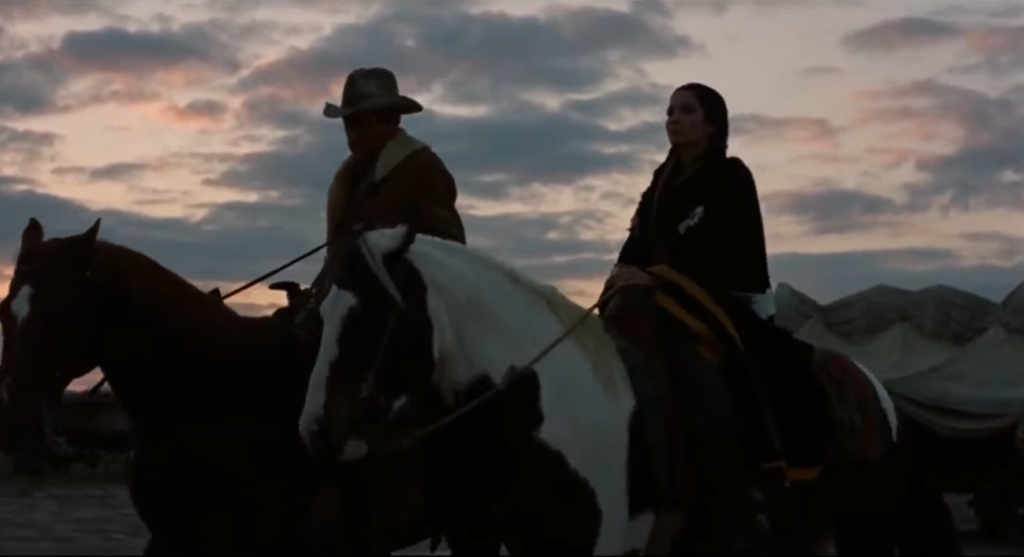
Must See?
No, though Ford fans will of course be curious to check it out.
Links:
|
